- Masterpiece名著:十四行诗·莎士比亚全集40(234P):2023年-06月-08日
- Masterpiece名著:露克利斯·莎士比亚全集39(178P):2023年-06月-08日
- Masterpiece名著:维诺斯与阿都尼斯·莎士比亚全集38(204P):2023年-06月-08日
- Masterpiece名著:波里克利斯·莎士比亚全集37(201P):2023年-06月-08日
- Masterpiece名著:辛伯林·莎士比亚全集36(283P):2023年-06月-08日
- Masterpiece名著:安东尼与克利欧佩特拉`莎士比亚全集35(281P):2023年-06月-08日
- Masterpiece名著:奥赛罗·莎士比亚全集34(266P):2023年-06月-04日
- Masterpiece名著:李尔王·莎士比亚全集33(266P):2023年-06月-04日
- Masterpiece名著:哈姆雷特·莎士比亚全集32(309P):2023年-06月-04日
- Masterpiece名著:马克白·莎士比亚全集31(191P):2023年-06月-04日
- Masterpiece名著:朱利阿斯·西撒·莎士比亚全集30(203P):2023年-06月-02日
- Masterpiece名著:雅典的泰蒙·莎士比亚全集29(205P):2023年-06月-02日
- Masterpiece名著:罗密欧与朱丽叶·莎士比亚全集28(249P):2023年-06月-02日
- Masterpiece名著:泰特斯·安庄尼克斯·莎士比亚全集27(203P):2023年-06月-02日
- Masterpiece名著:考利欧雷诺斯·莎士比亚全集26(292P):2023年-05月-28日
- Masterpiece名著:脱爱勒斯与克莱西达·莎士比亚全集25(275P):2023年-05月-28日
- Masterpiece名著:亨利八世·莎士比亚全集24(261P):2023年-05月-28日
- Masterpiece名著:利查三世·莎士比亚全集23(294P):2023年-05月-28日
- Masterpiece名著:亨利六世 下·莎士比亚全集22(237P):2023年-05月-26日
- Masterpiece名著:亨利六世 中·莎士比亚全集21(247P):2023年-05月-26日
- Masterpiece名著:亨利六世 上·莎士比亚全集20(228P):2023年-05月-26日
- Masterpiece名著:亨利五世·莎士比亚全集19(249P):2023年-05月-26日
- Masterpiece名著:亨利四世 下·莎士比亚全集18(257P):2023年-05月-26日
- Masterpiece名著:亨利四世 上·莎士比亚全集17(243P):2023年-05月-26日
- Masterpiece名著:利查二世·莎士比亚全集16(227P):2023年-05月-19日
- Masterpiece名著:约翰王·莎士比亚全集15(204P):2023年-05月-19日
- Masterpiece名著:冬天的故事·莎士比亚全集14(244P):2023年-05月-19日
- Masterpiece名著:第十二夜·莎士比亚全集13(214P):2023年-05月-19日
- Masterpiece名著:皆大欢喜·莎士比亚全集12(231P):2023年-05月-16日
- Masterpiece名著:驯悍妇·莎士比亚全集11(215P):2023年-05月-16日
- Masterpiece名著:如愿·莎士比亚全集10(210P):2023年-05月-16日
- Masterpiece名著:威尼斯商人·莎士比亚全集9(199P):2023年-05月-16日
- Masterpiece名著:仲夏夜梦·莎士比亚全集8(198P):2023年-05月-11日
- Masterpiece名著:空爱一场·莎士比亚全集7(236P):2023年-05月-11日
- Masterpiece名著:无事自扰·莎士比亚全集6(211P):2023年-05月-11日
- Masterpiece名著:错中错·莎士比亚全集5(159P):2023年-05月-09日
- Masterpiece名著:恶有恶报·莎士比亚全集4(219P):2023年-05月-05日
- Masterpiece名著:温莎的风流妇人·莎士比亚全集3(219P):2023年-05月-05日
- Masterpiece名著:维洛那二绅士·莎士比亚全集2(184P):2023年-05月-05日
- Masterpiece名著:暴风雨·莎士比亚全集1(161P):2023年-05月-05日
《驯悍记》是英国戏剧家威廉·莎士比亚创作的剧本,创作于1590年至1600年。
《驯悍记》讲述了富家女凯瑟琳娜接受彼特鲁乔的改造,凯瑟琳娜的服从是为了躲避彼特鲁乔的折磨,彼特鲁乔成功地让凯瑟琳娜成为一位“失去自我”的温柔妻子的故事。
在该剧本中,以凯瑟琳娜为代表的女性们,笼罩在以男性统治和权威的绝对控制下,对自我个性的追求和社会现实的理想化,使得女性在夹缝中难以生存,不得不上演一出震撼人心的悲剧。《驯悍记》探讨了女主人公凯瑟琳娜从“悍女”到“贤妻”,从“语”到“失语”这一转型过程中的心理变化及其“失语”成因。
《驯悍记》讲述的是精明的彼特鲁乔迎娶“彪悍”的富家女凯瑟琳娜的故事。凯瑟琳娜脾气不好远近闻名,她是“泼妇”、“活阎王”,所以她的父亲着急把她嫁出去,宁可拿出昂贵嫁妆,也无人问津。“绅士”彼特鲁乔得知这个消息后,便向凯瑟琳娜求婚。可是从求婚到结婚开始两人就不断争吵,因为凯瑟琳娜脾气火爆所以从不把彼特鲁乔放在眼里。聪明的彼特鲁乔为了改造妻子,想出了一个对付妻子的奇怪方法,就是比凯瑟琳娜脾气更火爆,以宠惯妻子为借口,制造出脾气暴躁的假象,让妻子受到外人误解和怠慢。凯瑟琳娜受到各种折磨之后终于明白作为妻子应该遵守妇道,不该野蛮粗暴,完全服从“妇道宣言”,从此以后凯瑟琳娜成功被彼特鲁乔改造成温柔贤惠的妻子。
《驯悍记》的故事背景约为16世纪的英国。伊丽莎白时代,法律没有针对妇女地位的专门条款,但从婚姻、继承权等条款中可以揣测出妇女的社会地位。女性在婚前是父亲的棋子,若女性没有足够体面的嫁妆,就会被鼓励进修道院,成婚后女性便成为丈夫的财产。妻子被视为男人的私有财产,自然与丈夫不能形成对等关系。女性的重要使命就是嫁个好丈夫,因此,父母们不惜花费高昂的学费送女儿去学习舞蹈、交际礼节、精美的针线活,以及厨艺和家务等技能。女人为了突出细长的腰身,将木片、鲸骨或者金属制成的撑架紧紧地绑缚在自己的身上。由于撑架的束缚,许多女人在交际场合呼吸急促,脸部发红,这些“娇嗔嫩喘”的状态,正是刺激男人的因素。丈夫是妻子要绝对服从的主人,女性作为“第二性”或“他者”,被排斥在男性中心社会之外。男人们在外喝酒狂欢,追逐名利和女人,往往被认为是一种社交时尚。女人却只能“嫁鸡随鸡,夫唱妇随”,不允许有一点“出格”、“出轨”。
《驯悍记》取材于古代苏格兰民谣《一张马皮裹悍妻》,继承了宣扬大男子主义的历史背景及驯悍文学传统,“男尊女卑”的历史现实,使作者不自觉地从男性视角维护自己的话语权。莎士比亚对残暴虐待女性的故事进行了大改动,嬉笑怒骂取代了极端场面。
The Taming of the Shrew is a play written by the British dramatist William Shakespeare, which was written from 1590 to 1600.
The Tale of Taming the Shrew “tells the story of a wealthy woman named Catherine who accepts Petruccio’s transformation. Catherine’s obedience is to avoid Petruccio’s torment, and Petruccio successfully makes Catherine a gentle wife who” loses herself “.
In this script, women represented by Catherine are shrouded in the absolute control of male dominance and authority, pursuing their own individuality and idealizing social reality, making it difficult for women to survive in the cracks and having to stage a shocking tragedy. The Tale of Taming the Shrew explores the psychological changes and causes of the female protagonist Catherine’s transformation from a “shrewd woman” to a “virtuous wife”, from “language” to “aphasia”.
The Tale of Taming the Shrew “tells the story of the shrewd Petruccio marrying the” tough “wealthy daughter Catherine. Katherine is known for her bad temper. She is a “shrew” and “living king of hell”, so her father is anxious to marry her out and would rather take out an expensive dowry than have anyone pay attention to her. Upon learning of this news, “Gentleman” Petruccio proposed to Catherine. But from proposing to getting married, the two of them kept arguing, and because Catherine had a hot temper, she never looked down on Petruccio. Clever Petruccio came up with a strange way to deal with his wife in order to reform her, which was to have a fiercer temper than Catherine. He used spoiling his wife as an excuse to create a false impression of irritability, causing her to be misunderstood and neglected by outsiders. After suffering various torments, Catherine finally understood that as a wife, she should abide by the laws of women, not be savage and rough, and fully comply with the “Declaration of Women’s Laws”. From then on, Catherine was successfully transformed into a gentle and virtuous wife by Petruccio.
The story background of ‘The Taming of the Shrew’ is approximately 16th century England. During the Elizabethan era, there were no specific provisions in the law regarding the status of women, but the social status of women could be inferred from provisions such as marriage and inheritance rights. Women are the pawns of their fathers before marriage. If they do not have a decent dowry, they are encouraged to attend monasteries, and after marriage, women become the property of their husbands. The wife is regarded as a man’s private property, and naturally cannot form an equal relationship with the husband. The important mission of women is to marry a good husband, so parents are willing to spend high tuition fees to send their daughters to learn dance, social etiquette, exquisite needlework, as well as cooking and household skills. Women tightly bind wooden chips, whale bones, or metal supports to their slender waists. Due to the constraints of braces, many women experience shortness of breath and redness in their faces during social interactions. These “delicate and tender gasps” are precisely the factors that stimulate men. The husband is the master that the wife must obey absolutely, and women, as “second sex” or “other”, are excluded from the male centered society. Men drinking and reveling outside, chasing fame and fortune, and women are often considered a social fashion. Women, on the other hand, can only “marry the rooster and follow the rooster”, and there is no room for any “deviance” or “infidelity”.
The Tale of Taming the Shrew “is based on the ancient Scottish folk song” A Horse Skin Wraps the Shrew Wife “, inheriting the historical background of promoting male chauvinism and the tradition of Taming the Shrew literature. The historical reality of” men are superior to women “makes the author unconsciously defend their discourse rights from a male perspective. Shakespeare made significant changes to the story of cruel and abusive women, replacing extreme scenes with laughter and abuse.










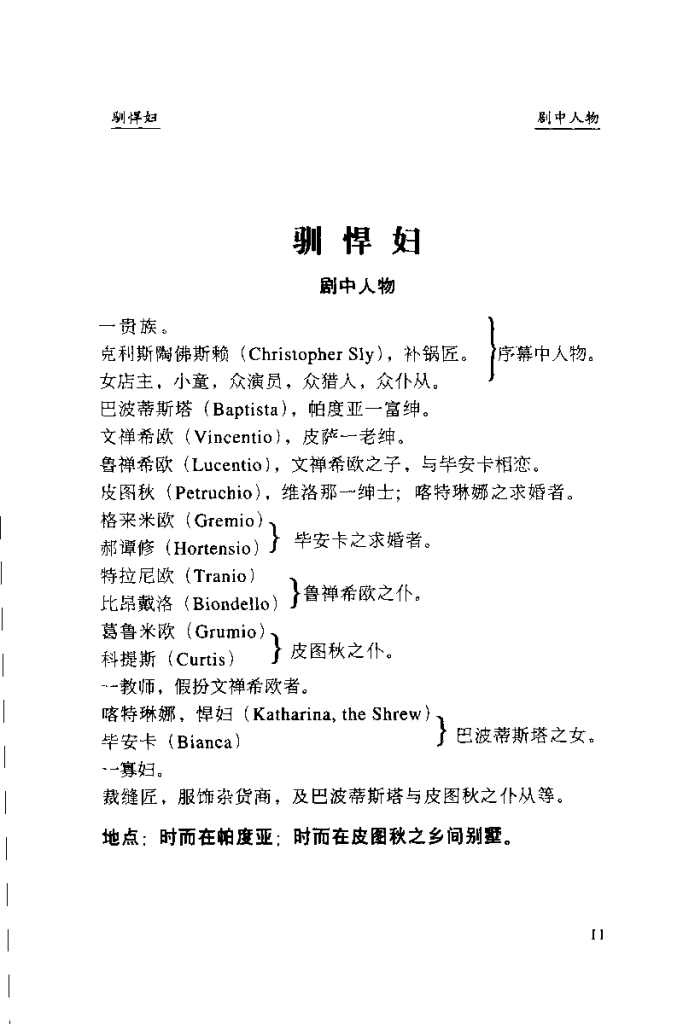


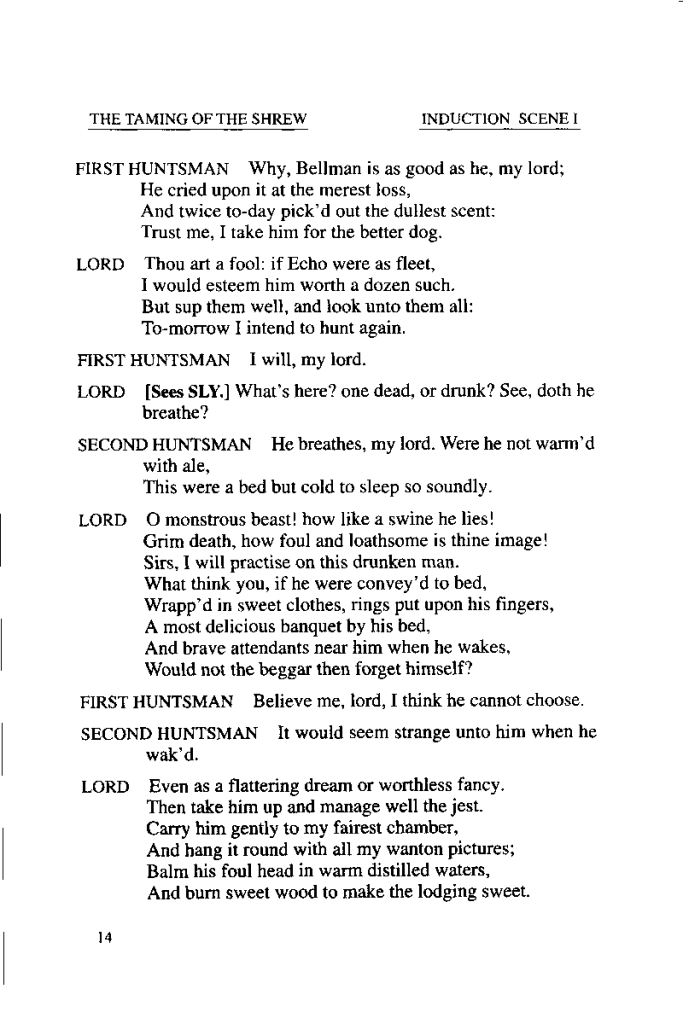
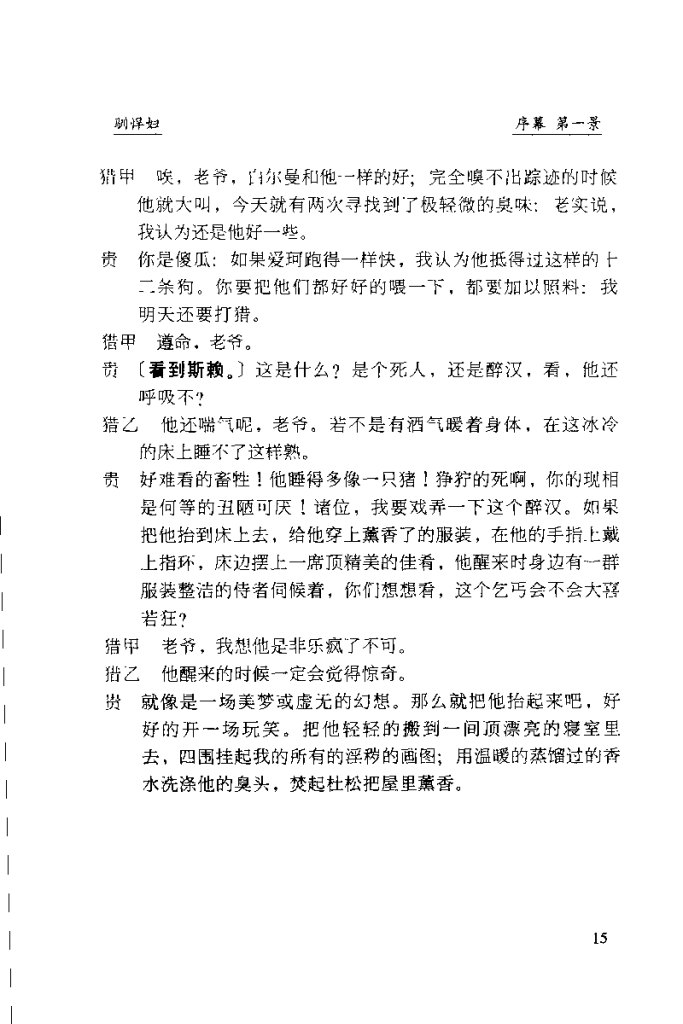


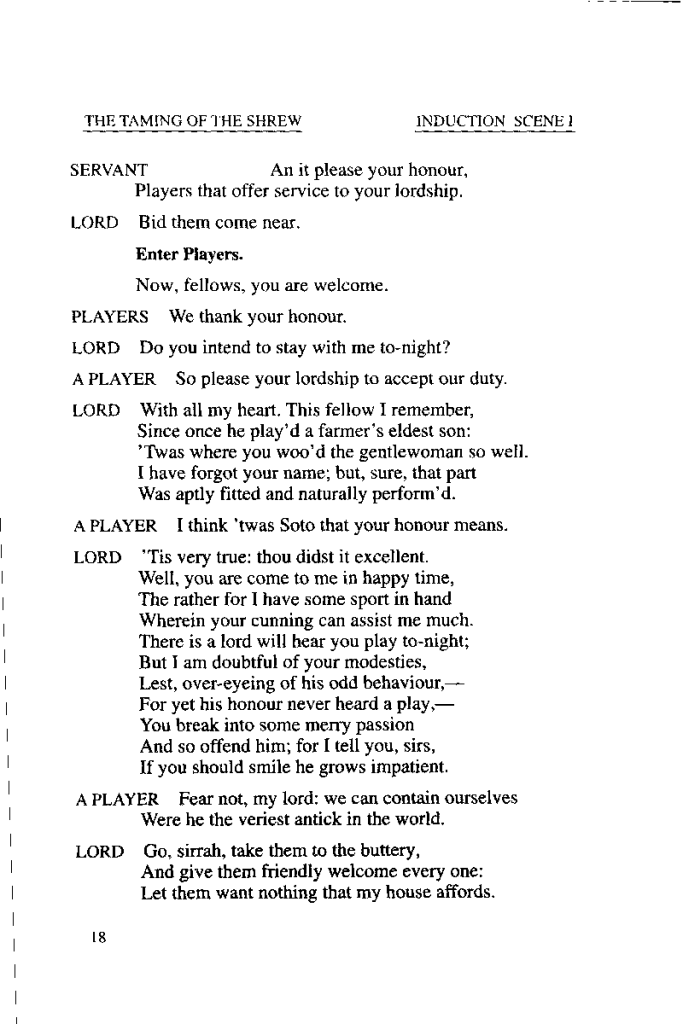






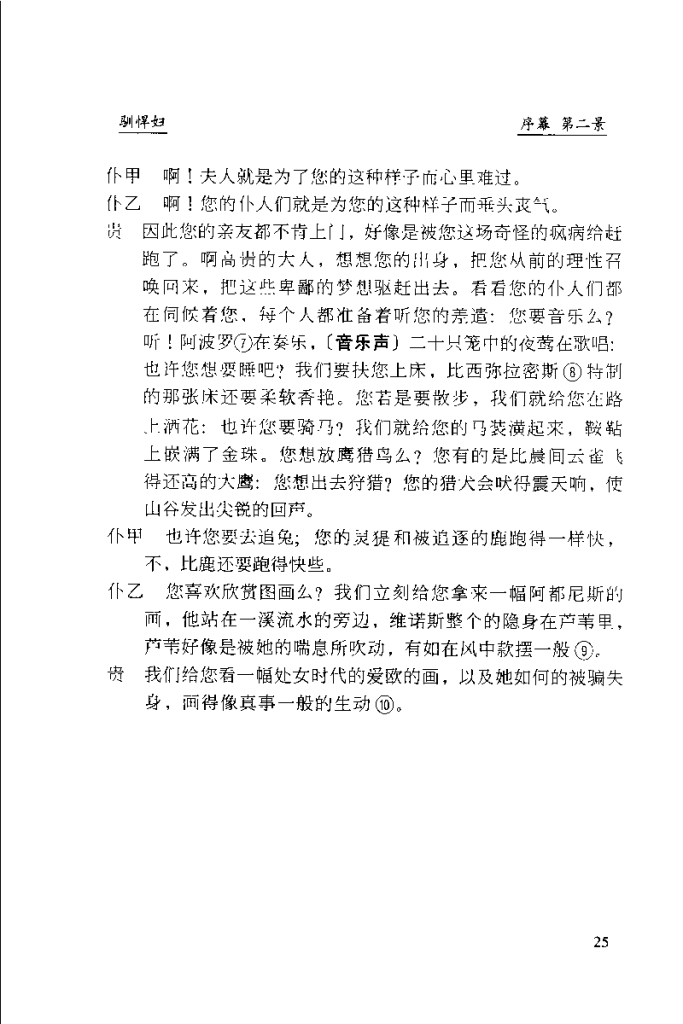

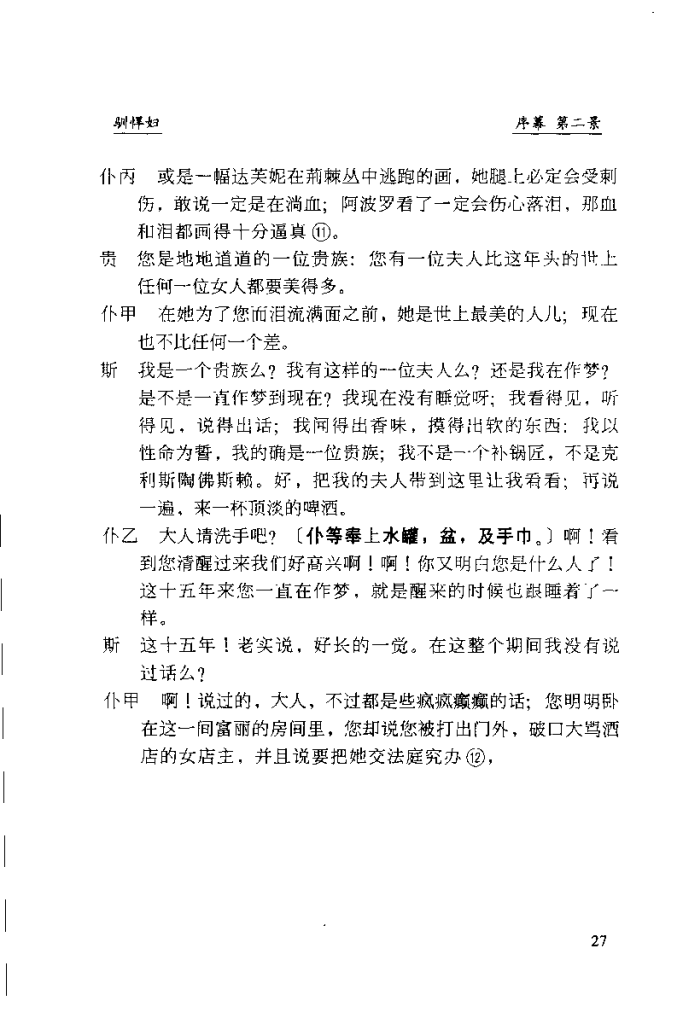


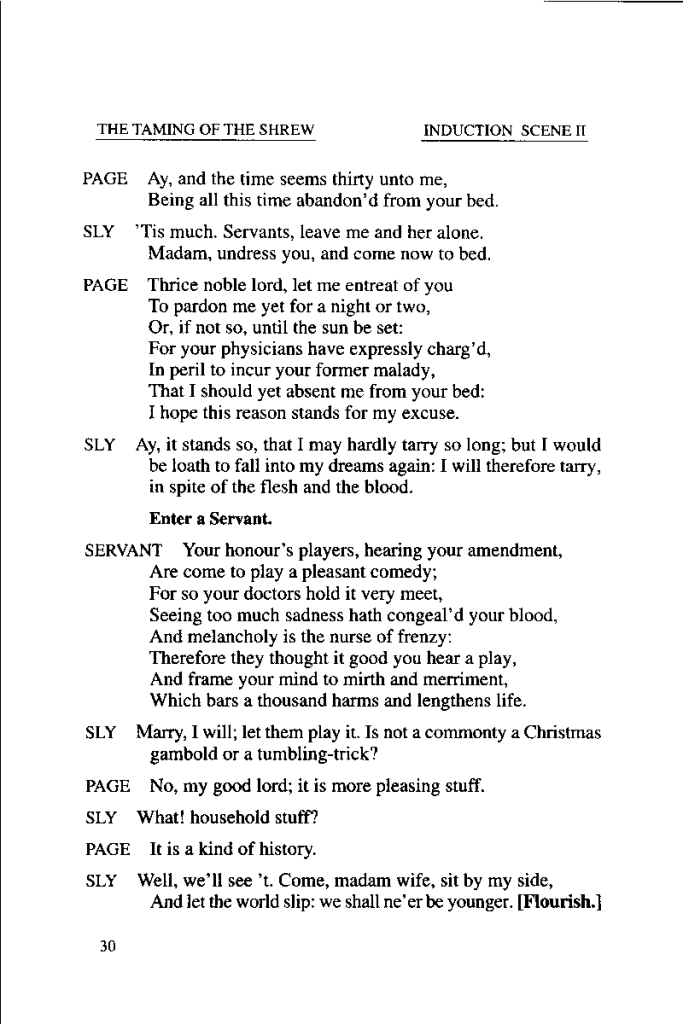

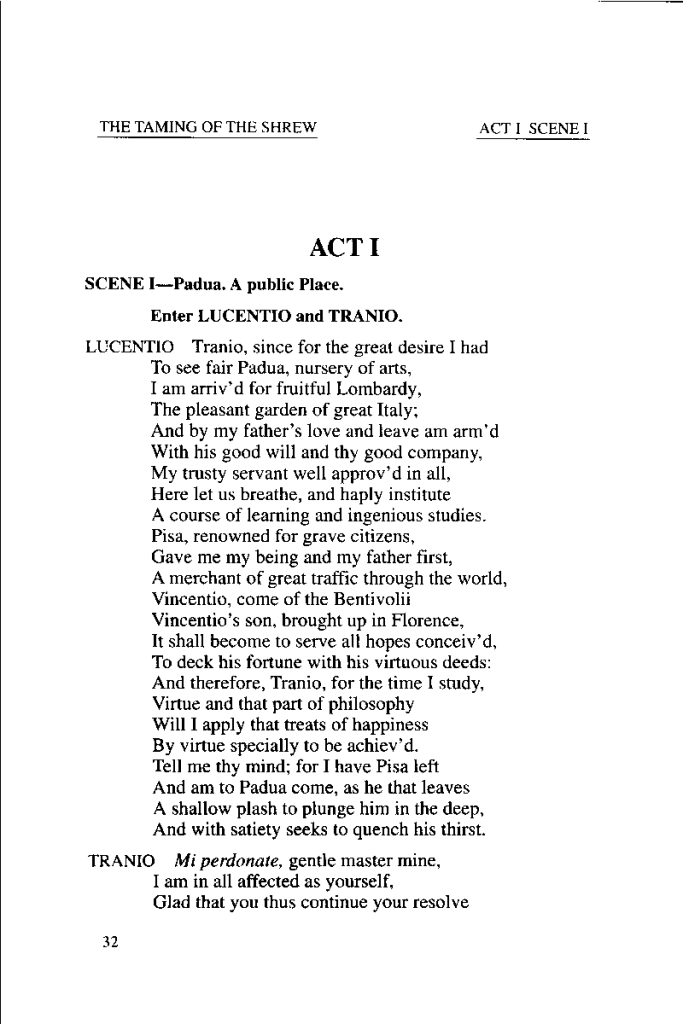

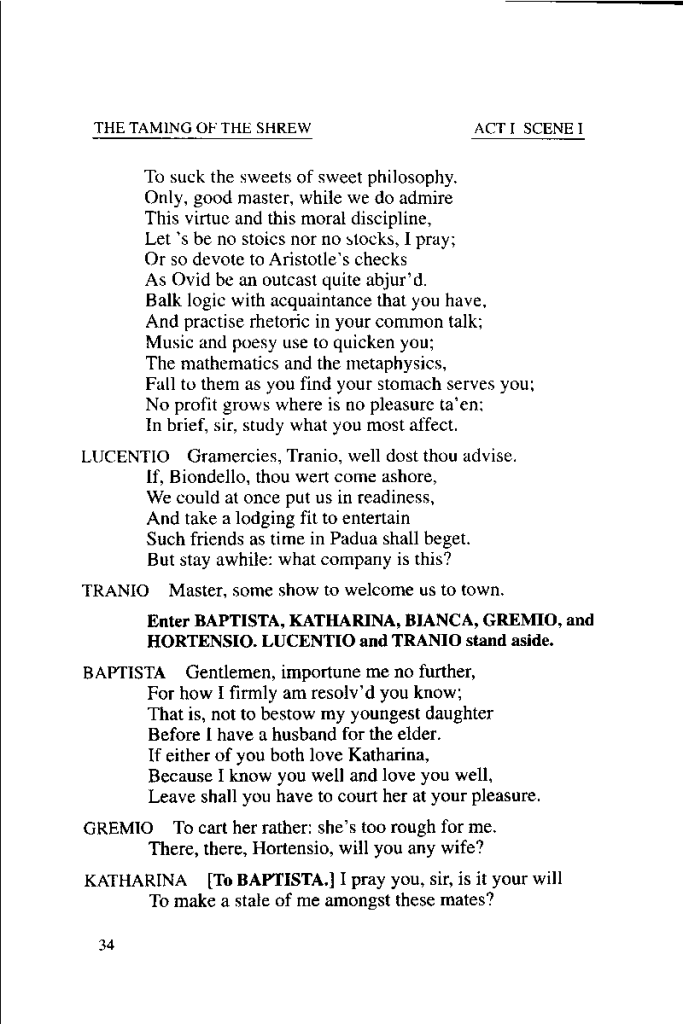

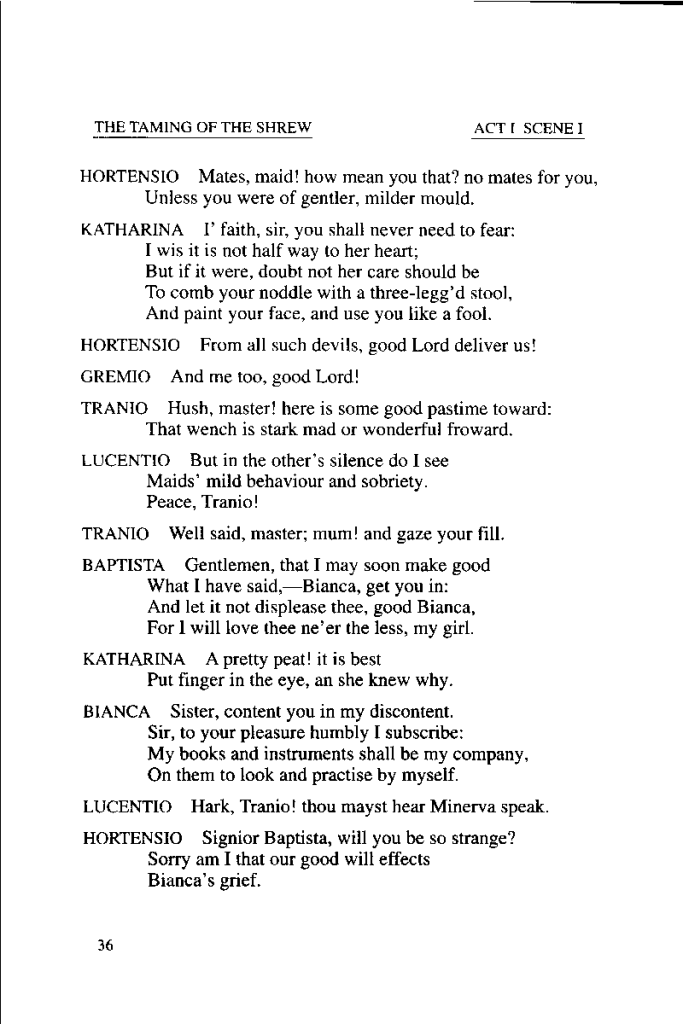






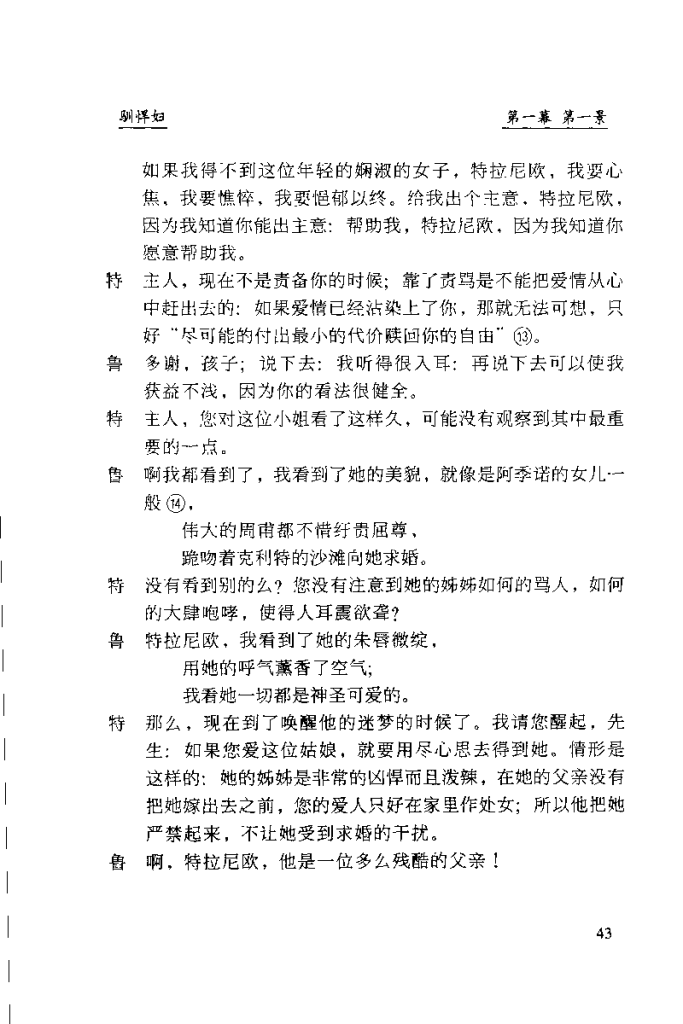


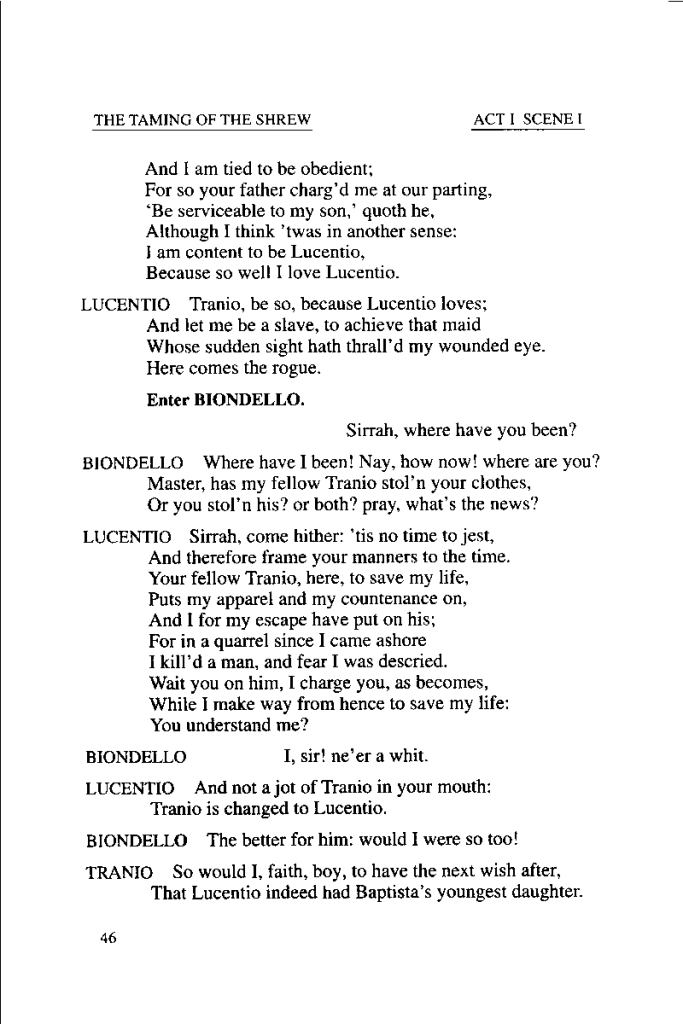


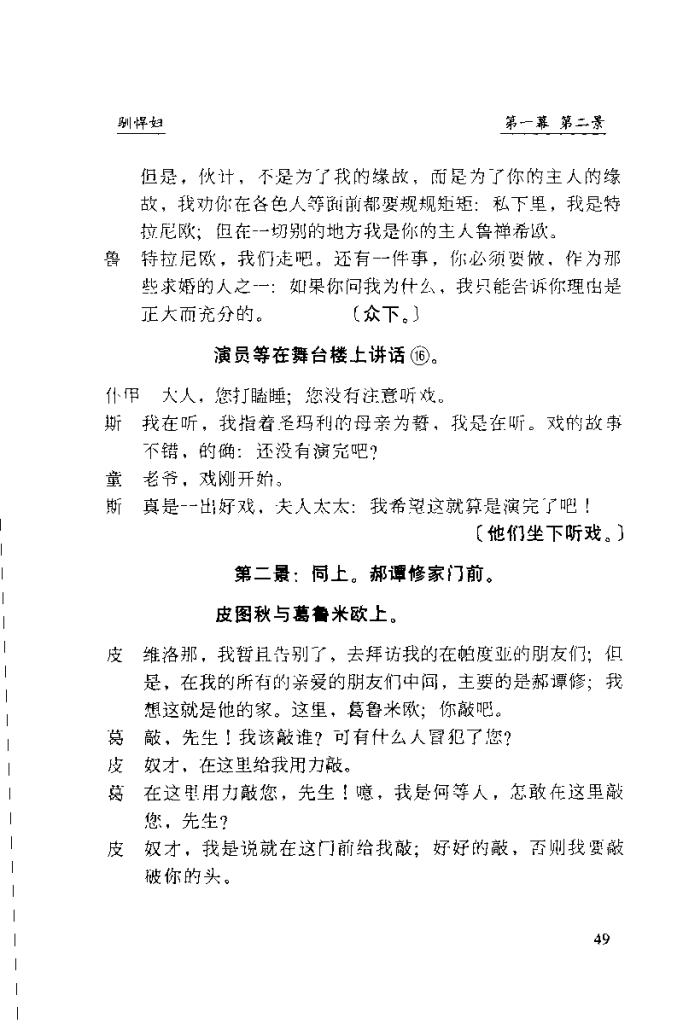





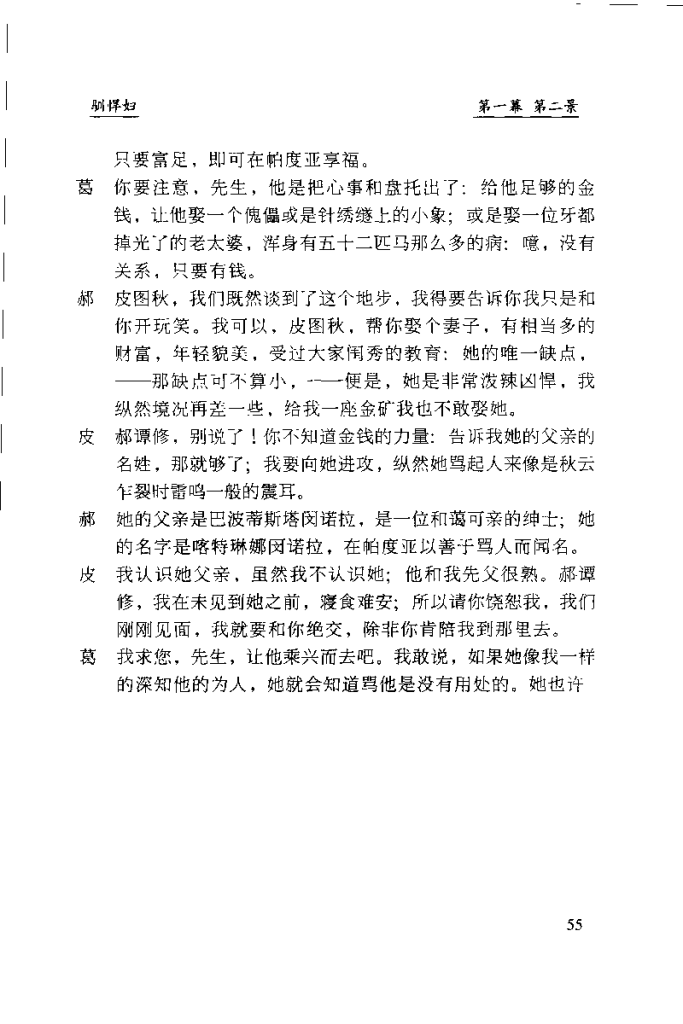

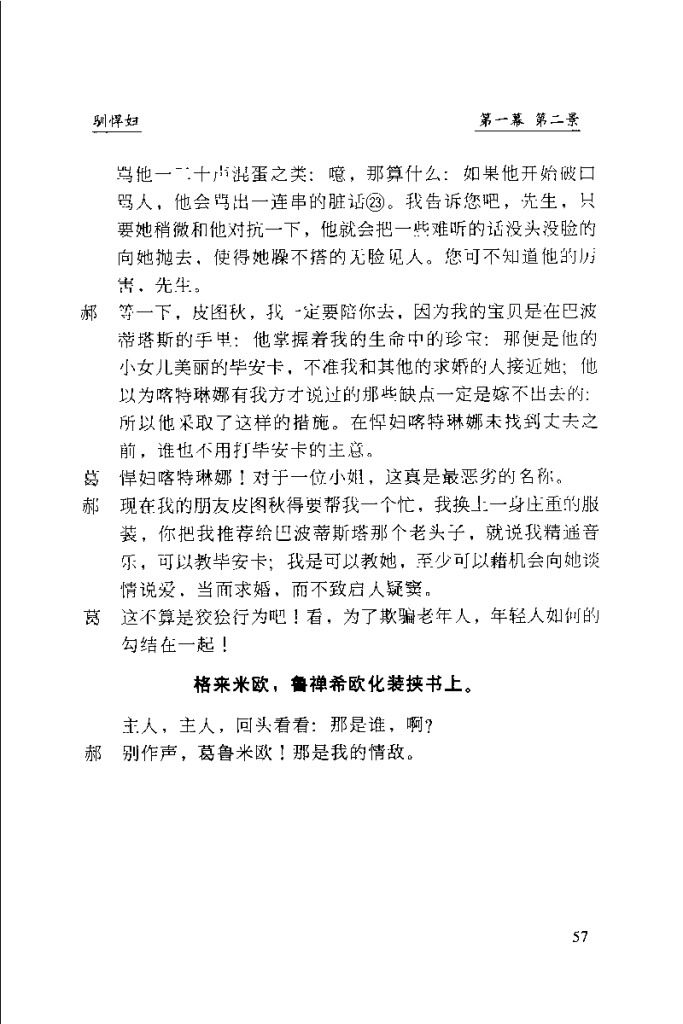
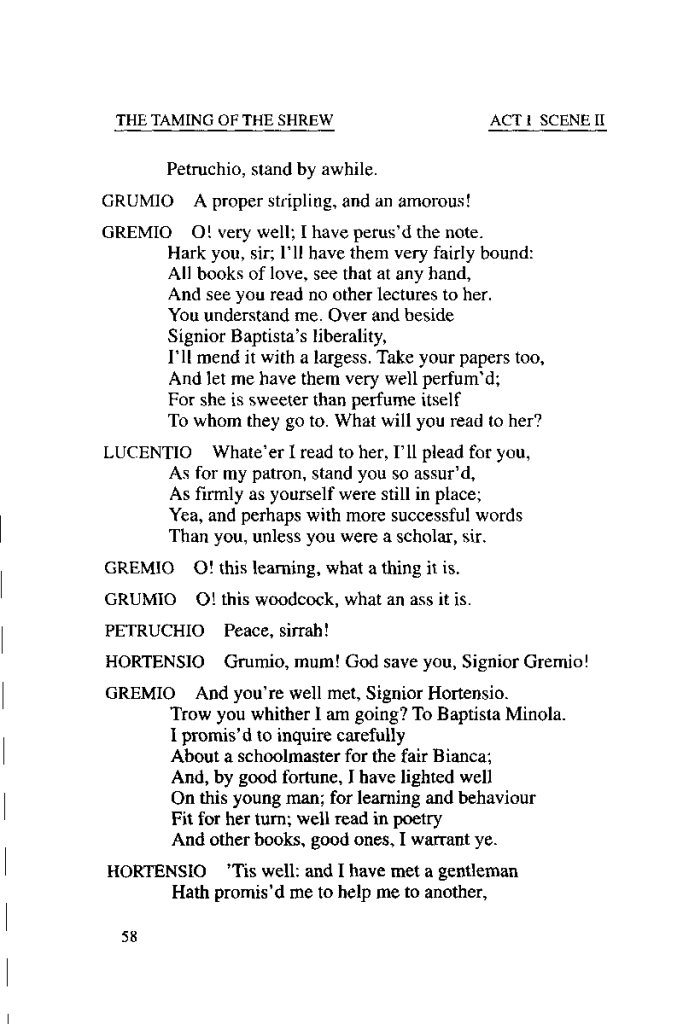


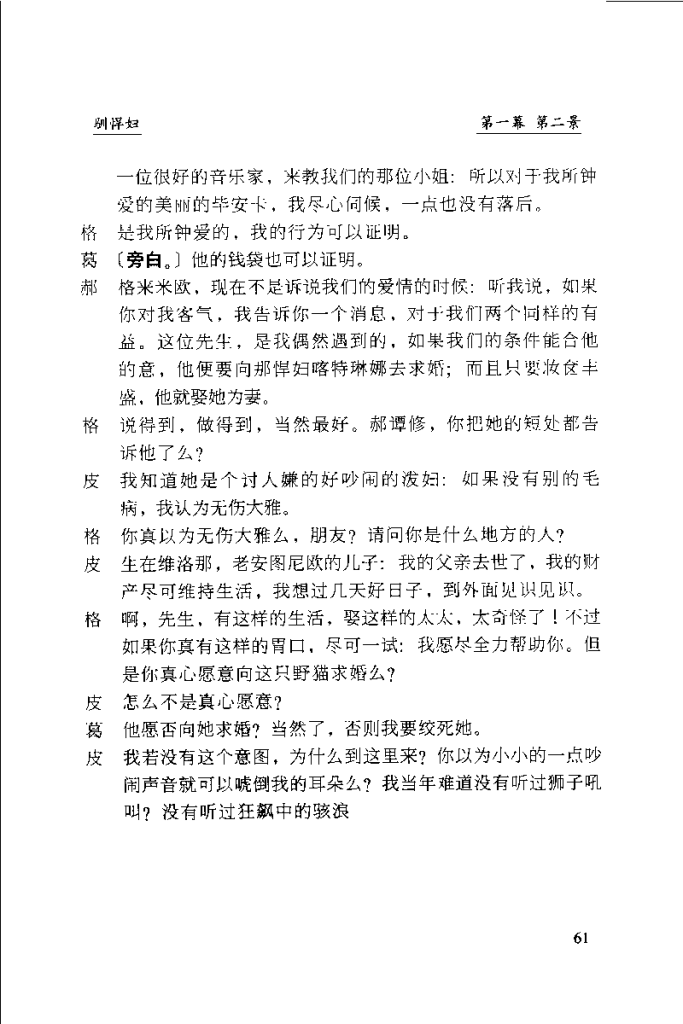
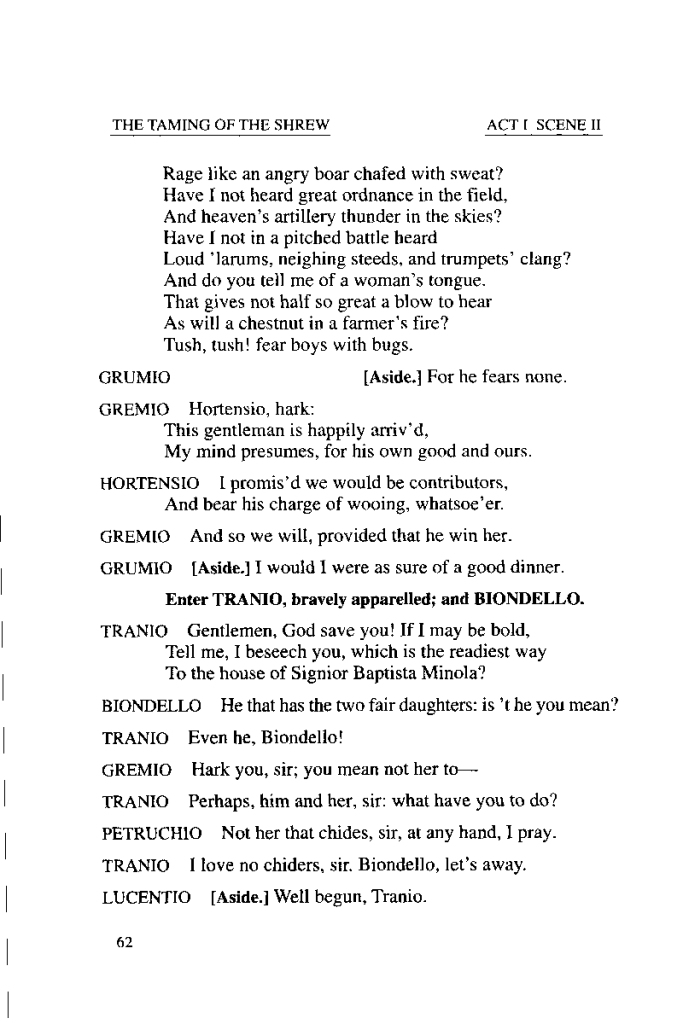

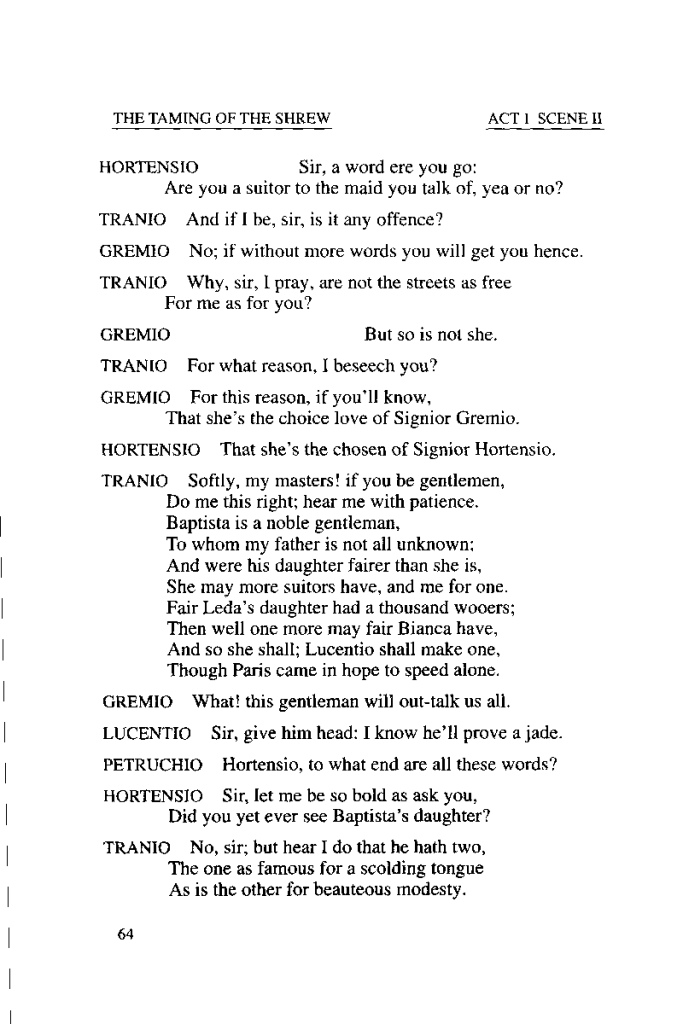
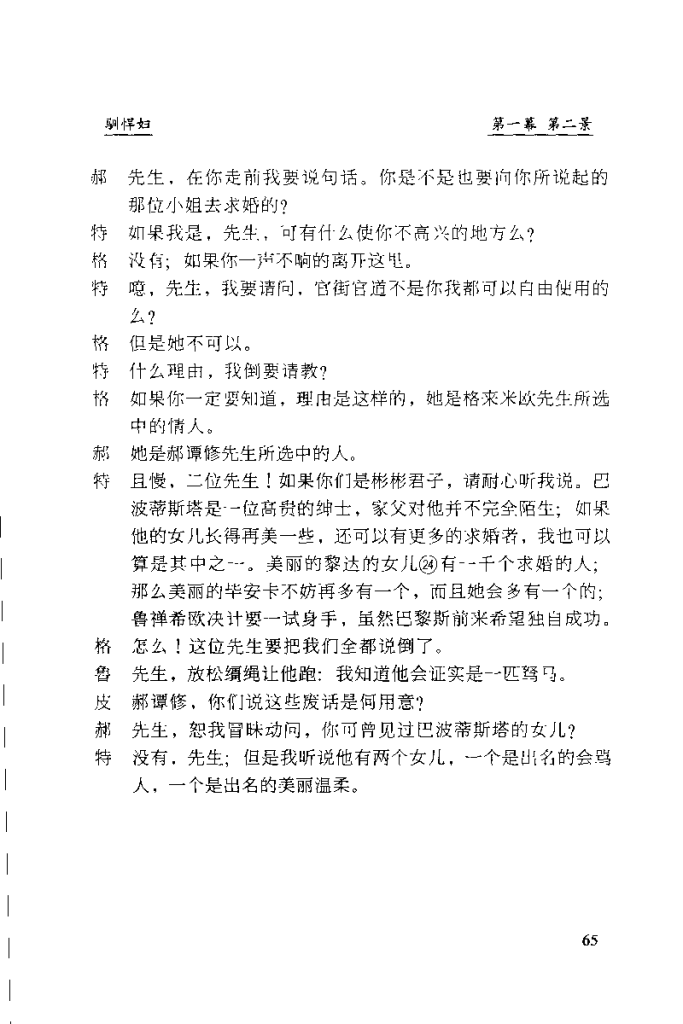

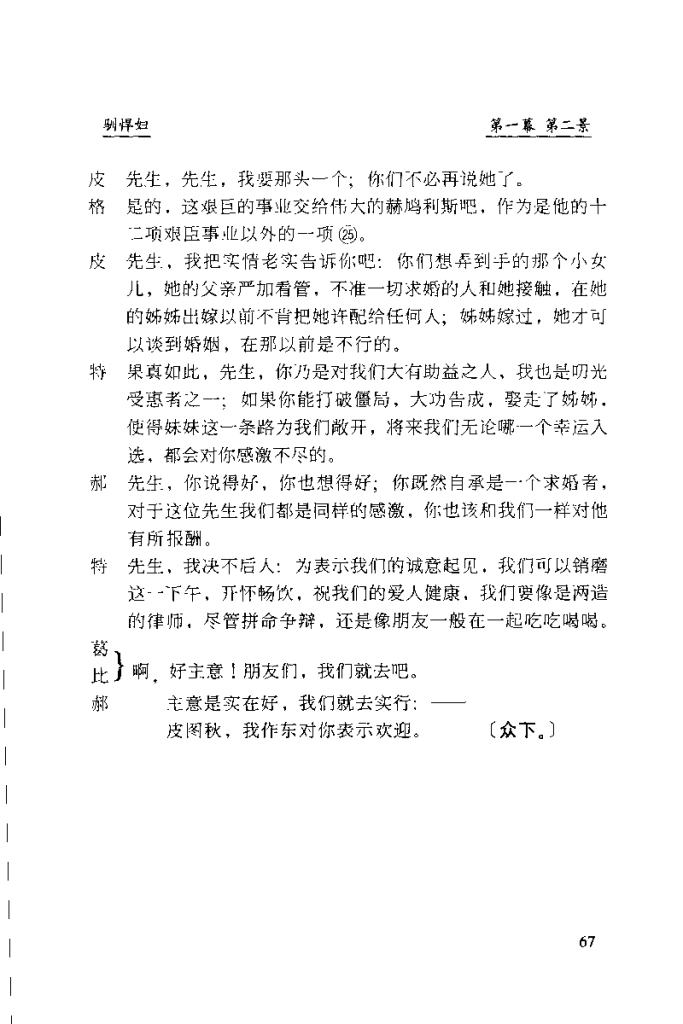








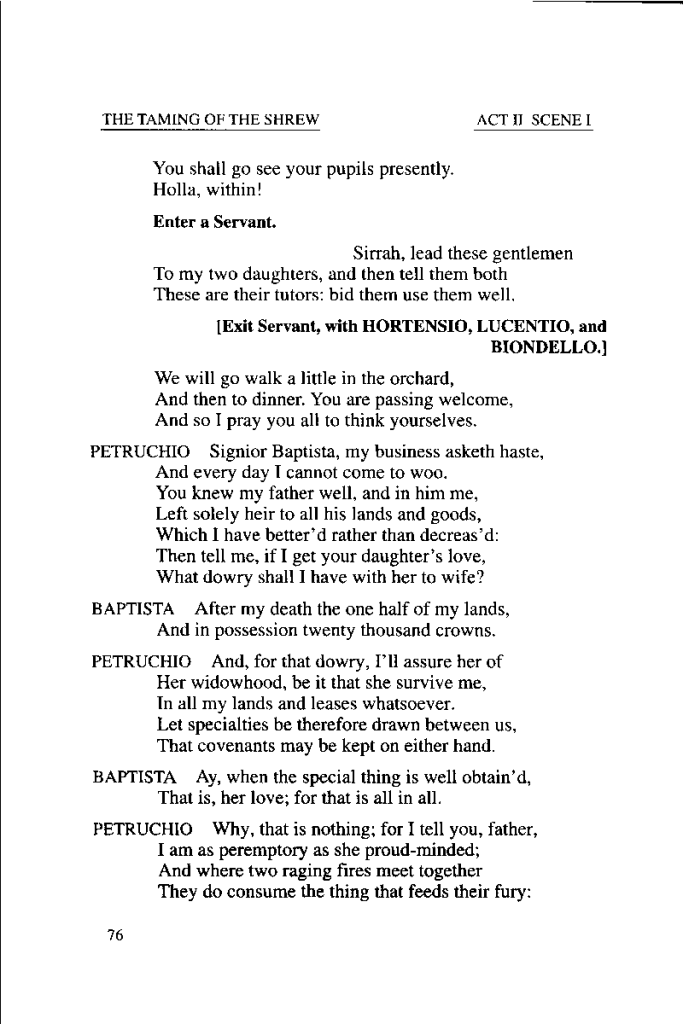

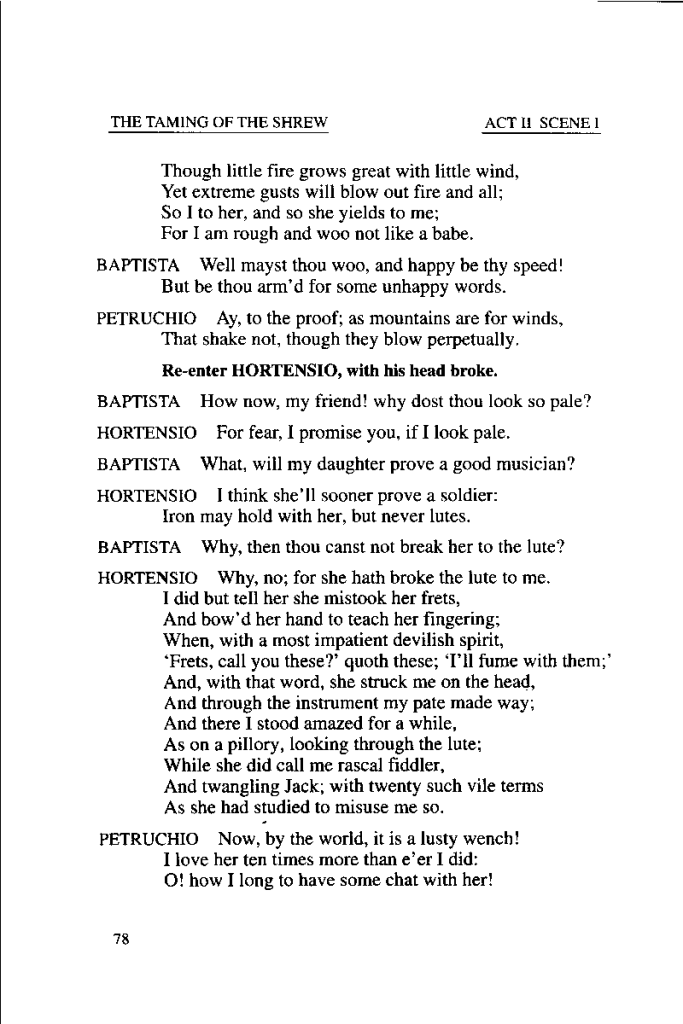





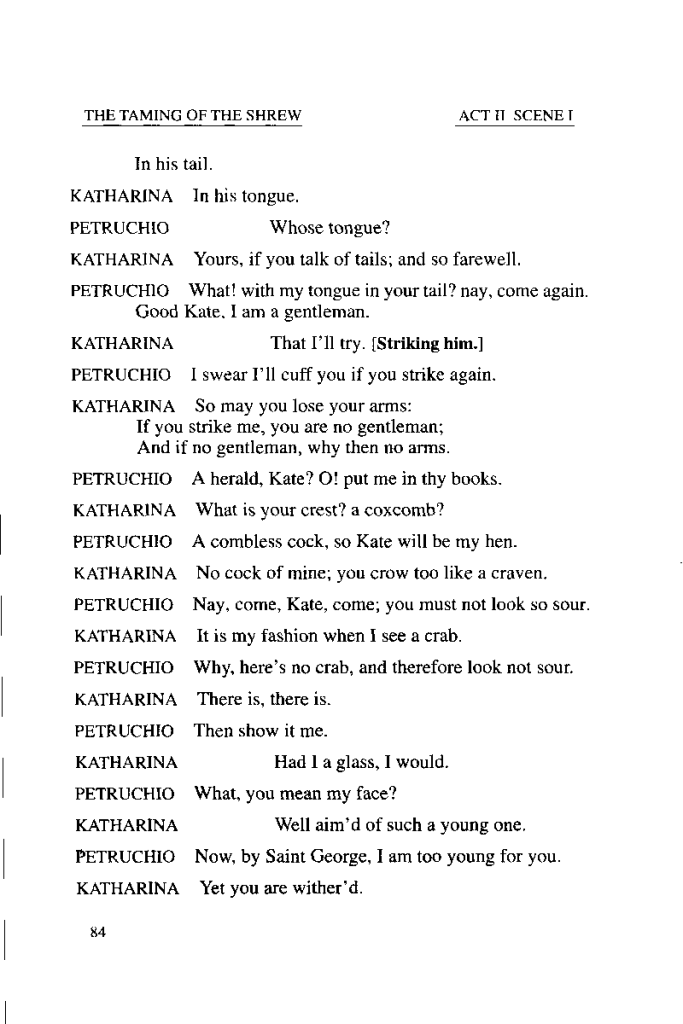




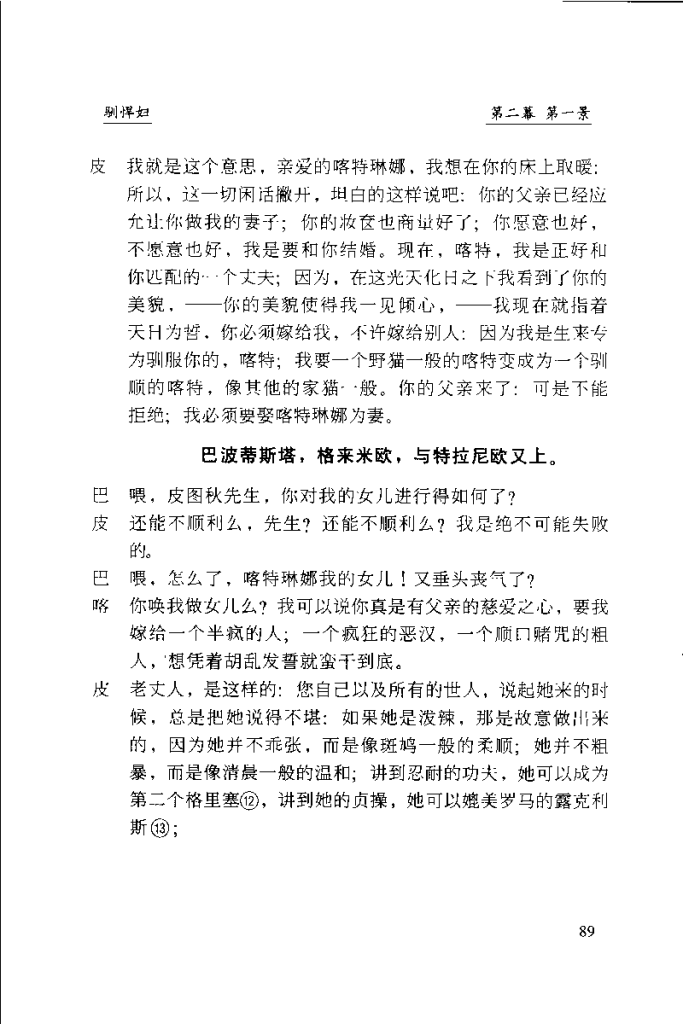

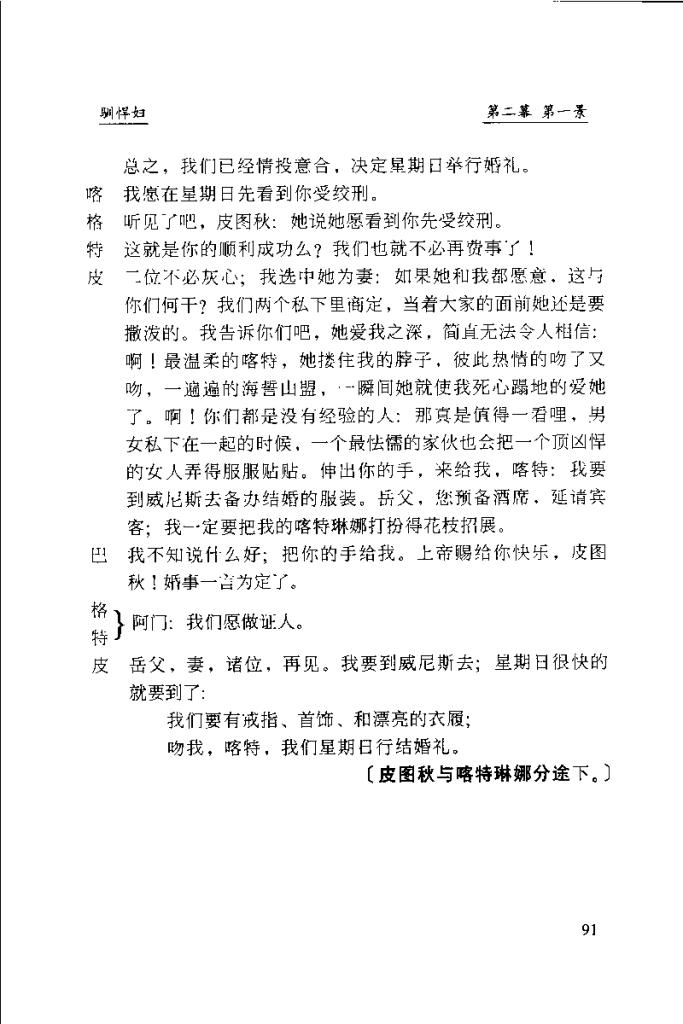





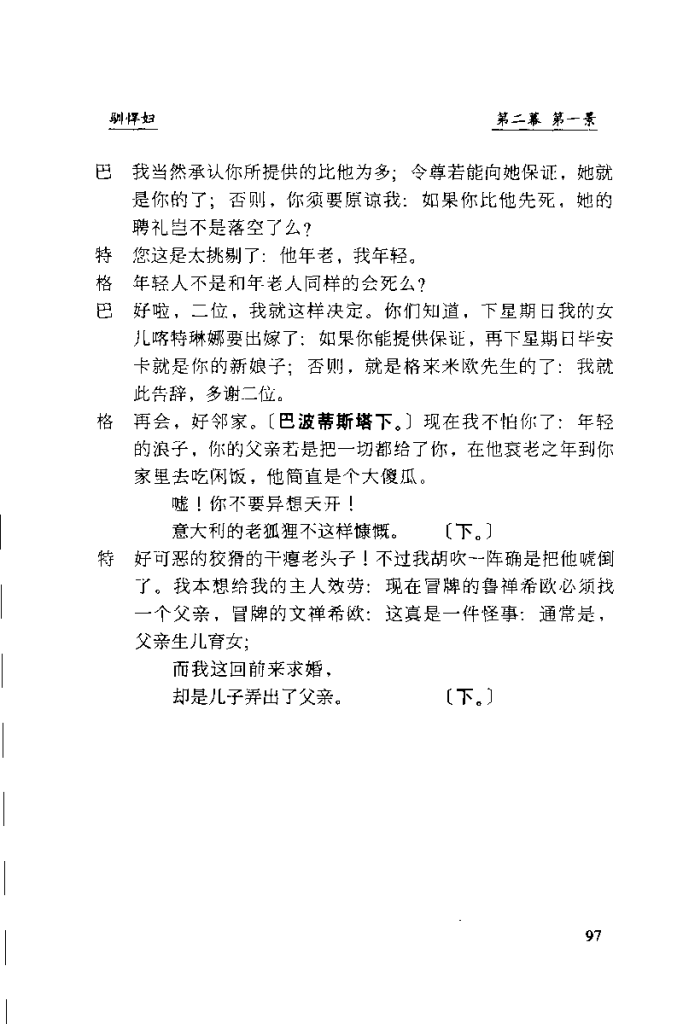
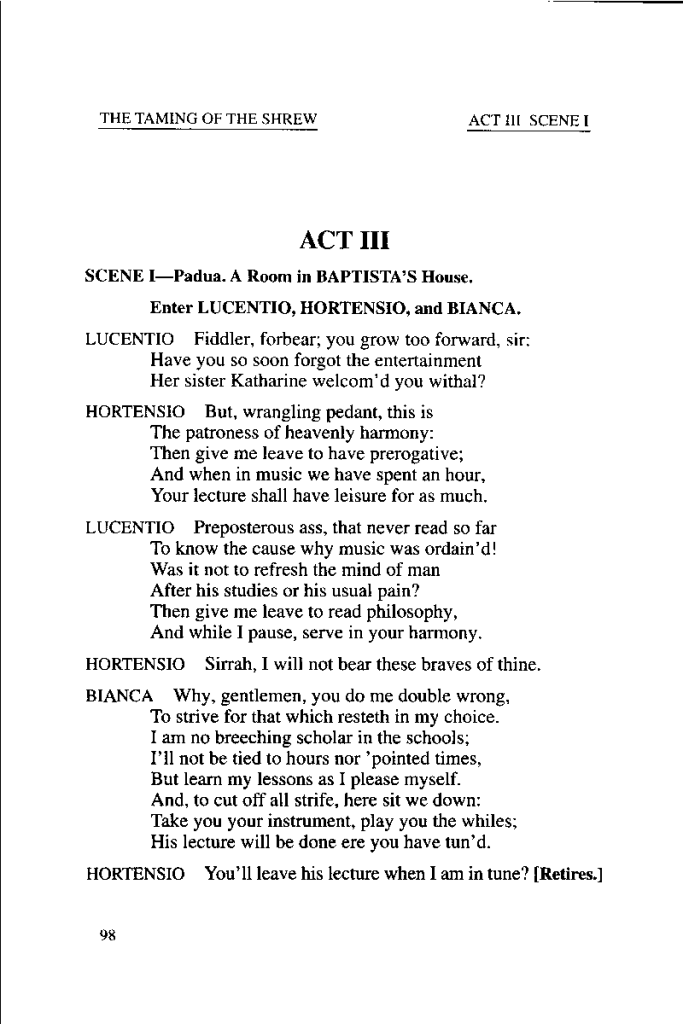



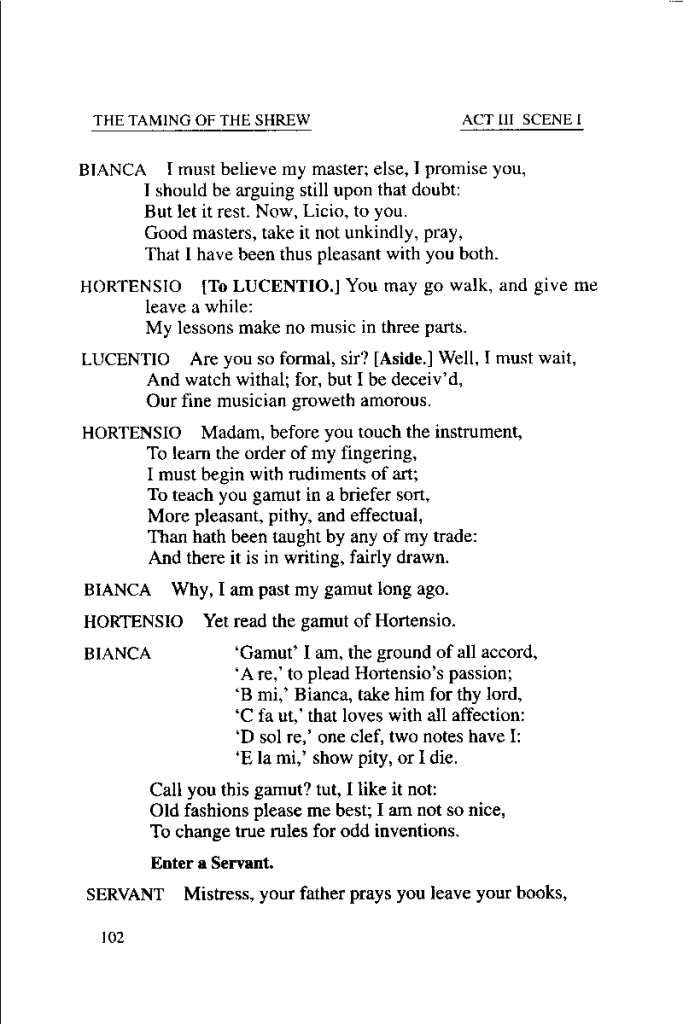


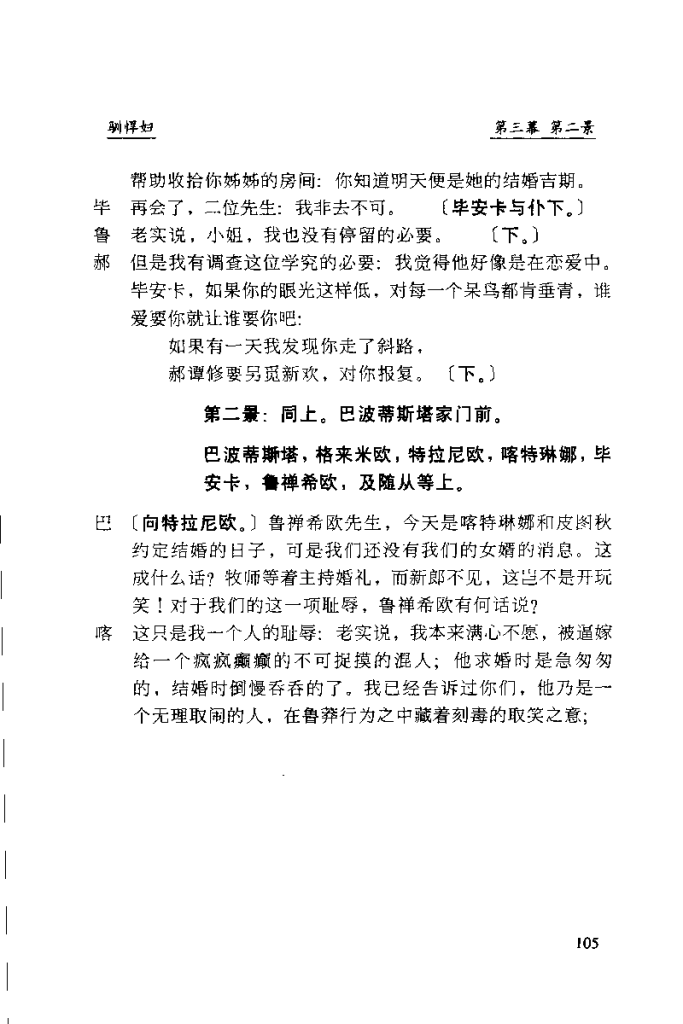
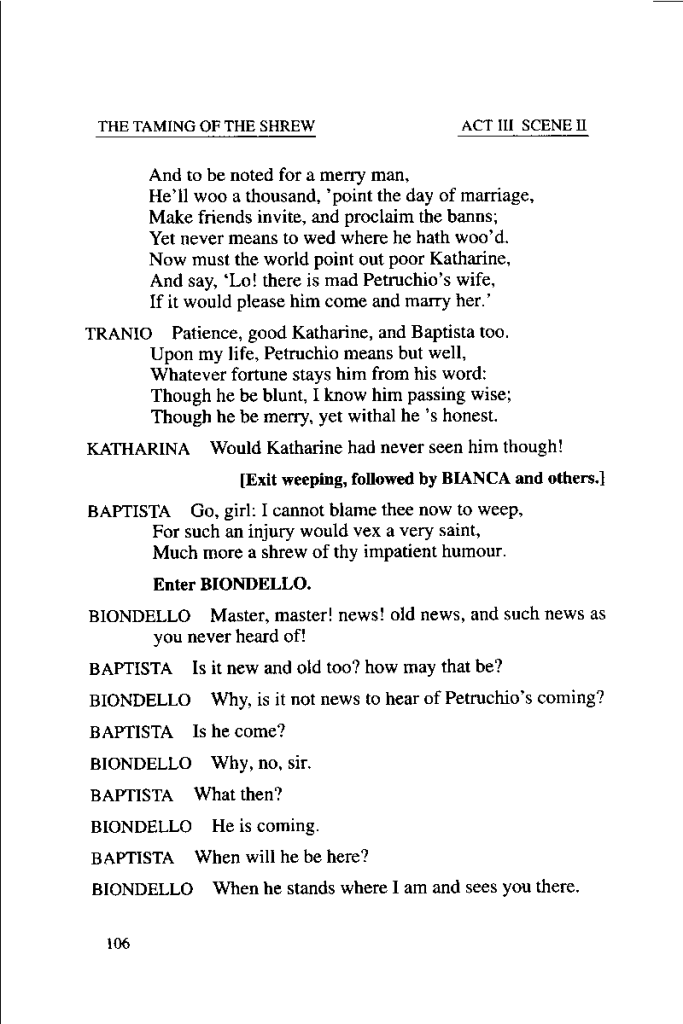





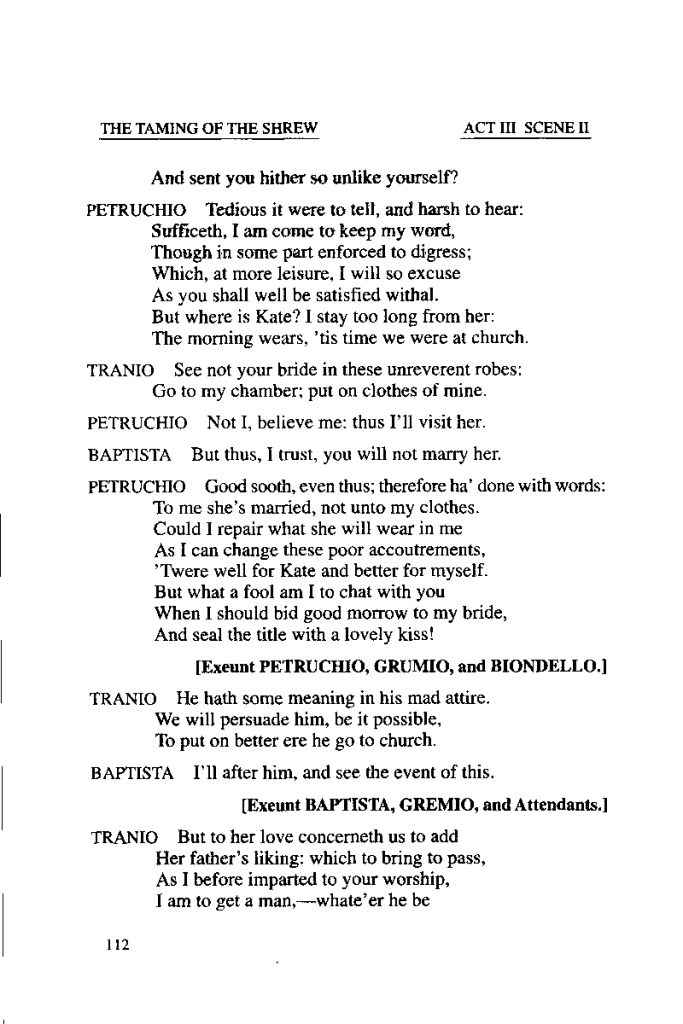





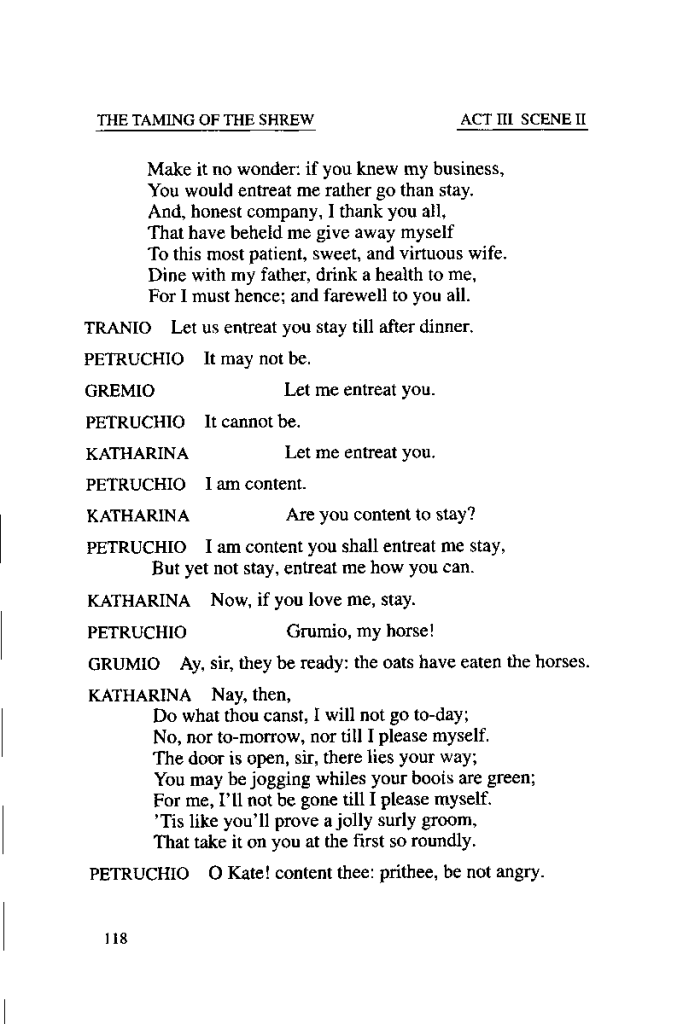




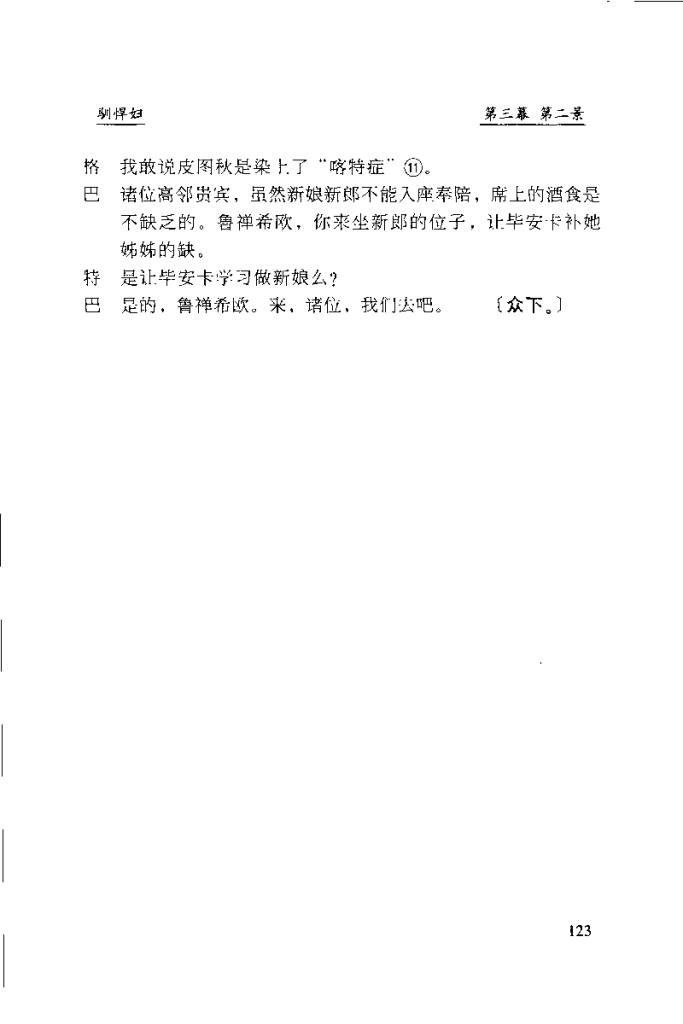

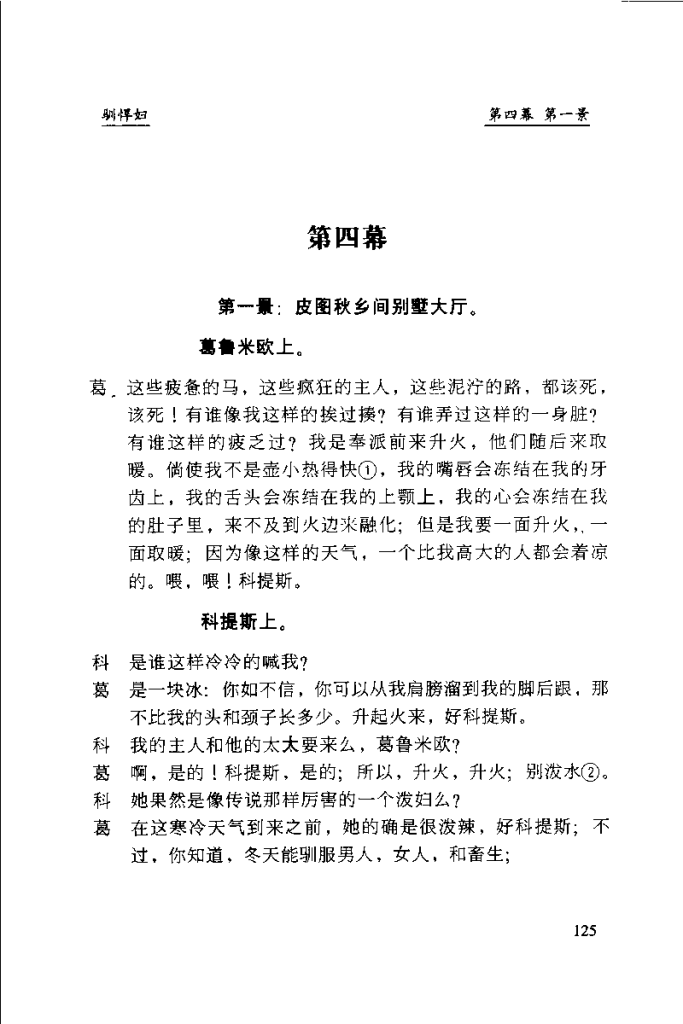


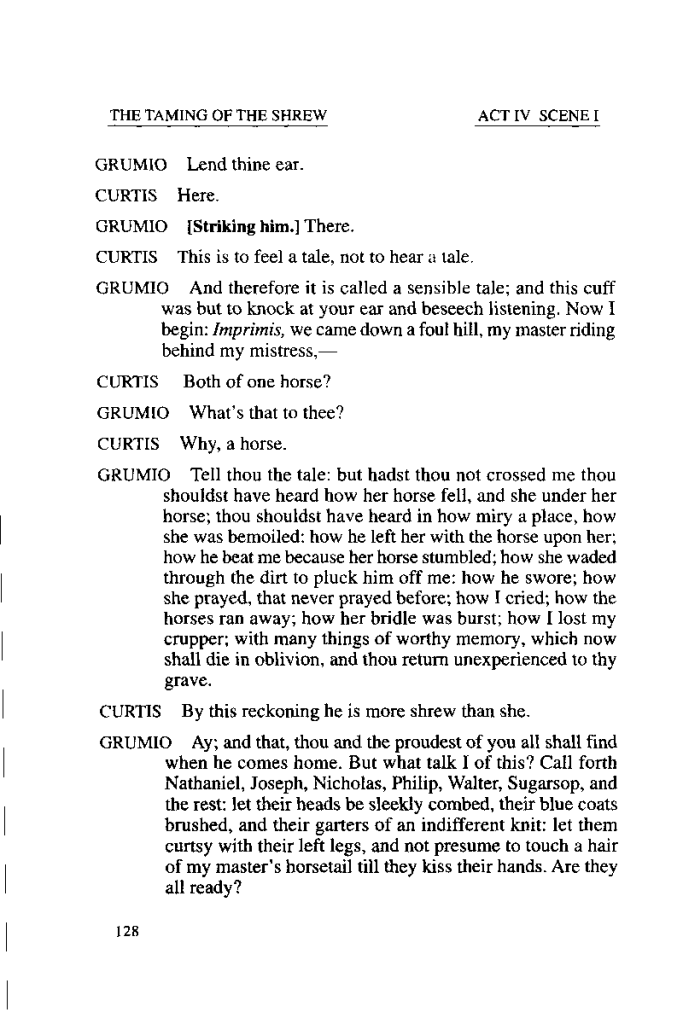
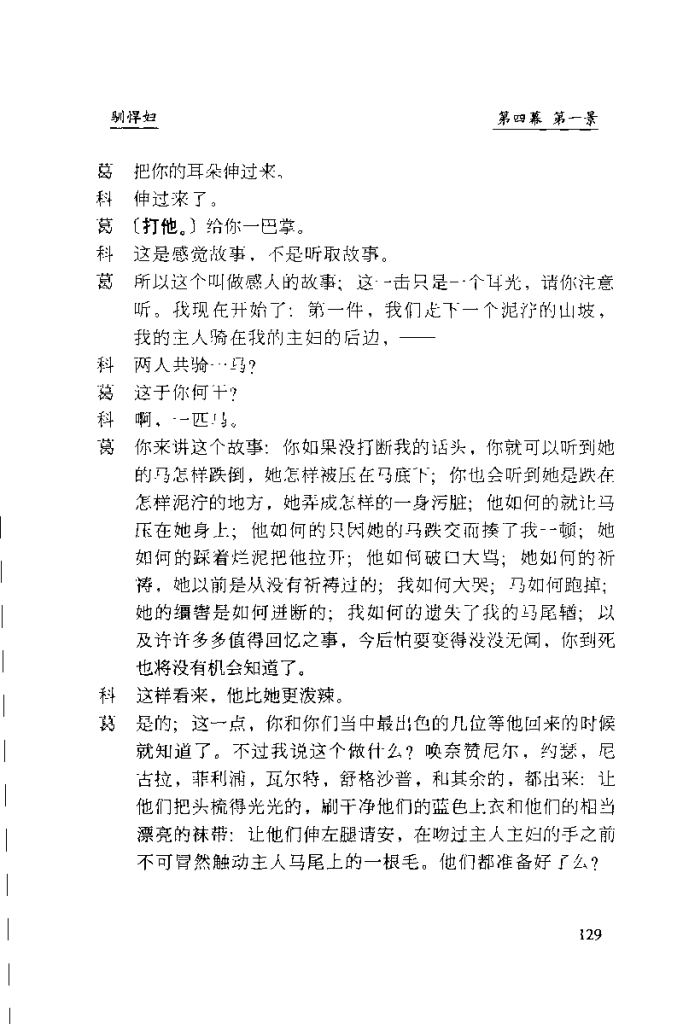


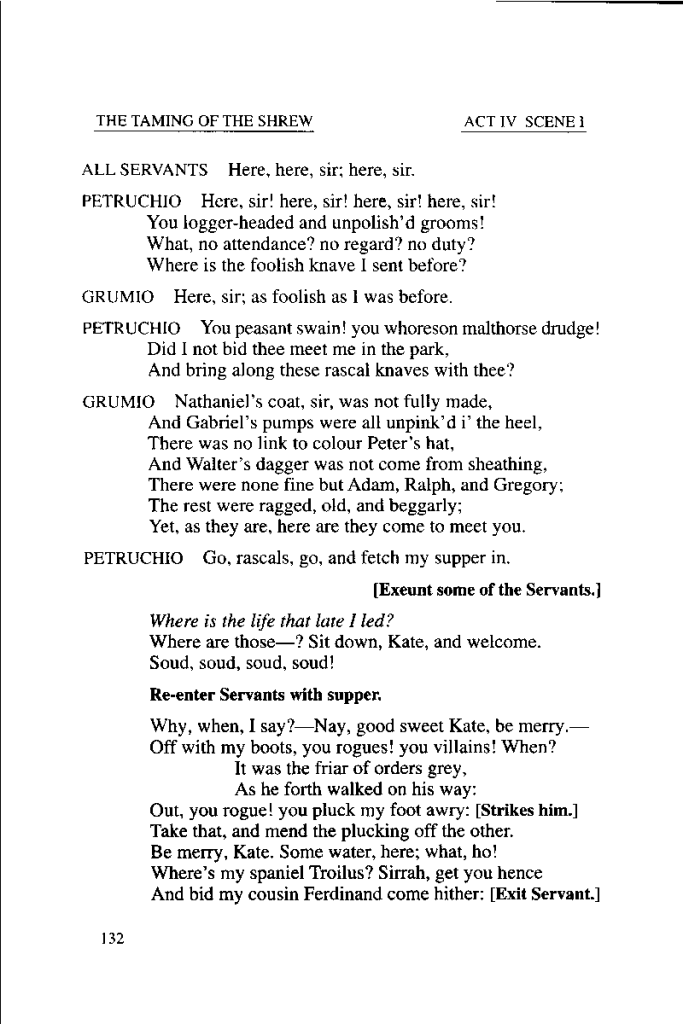

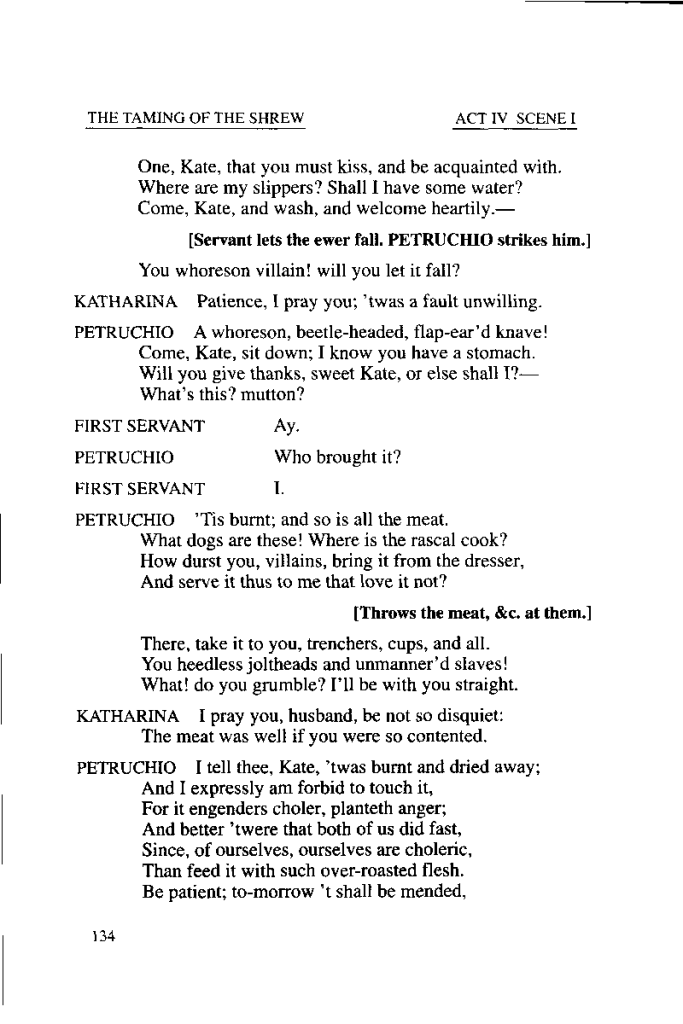

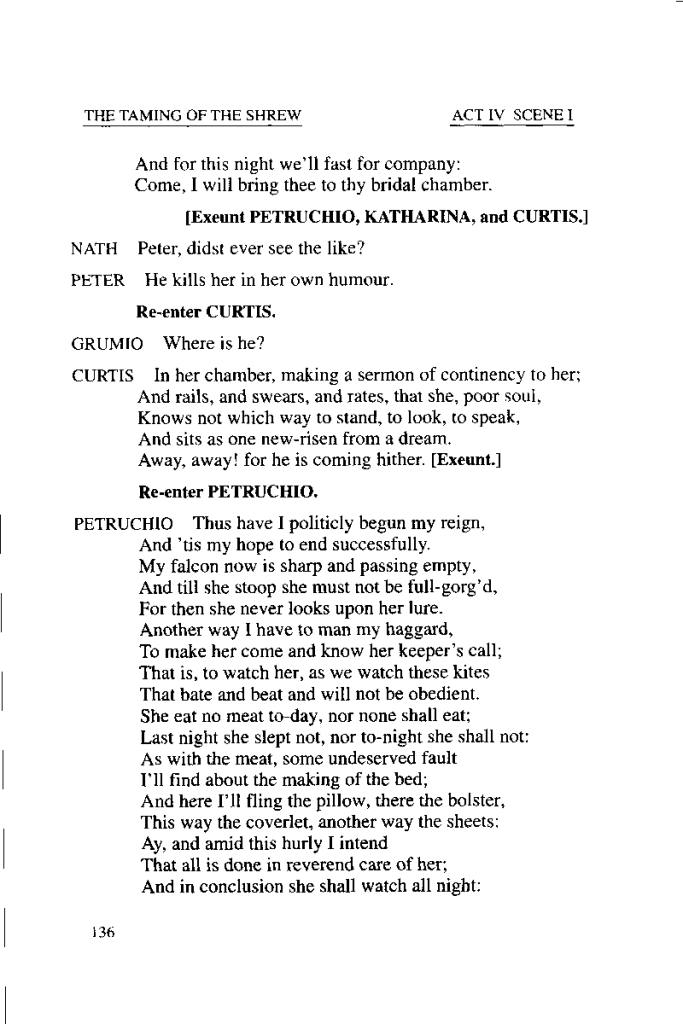

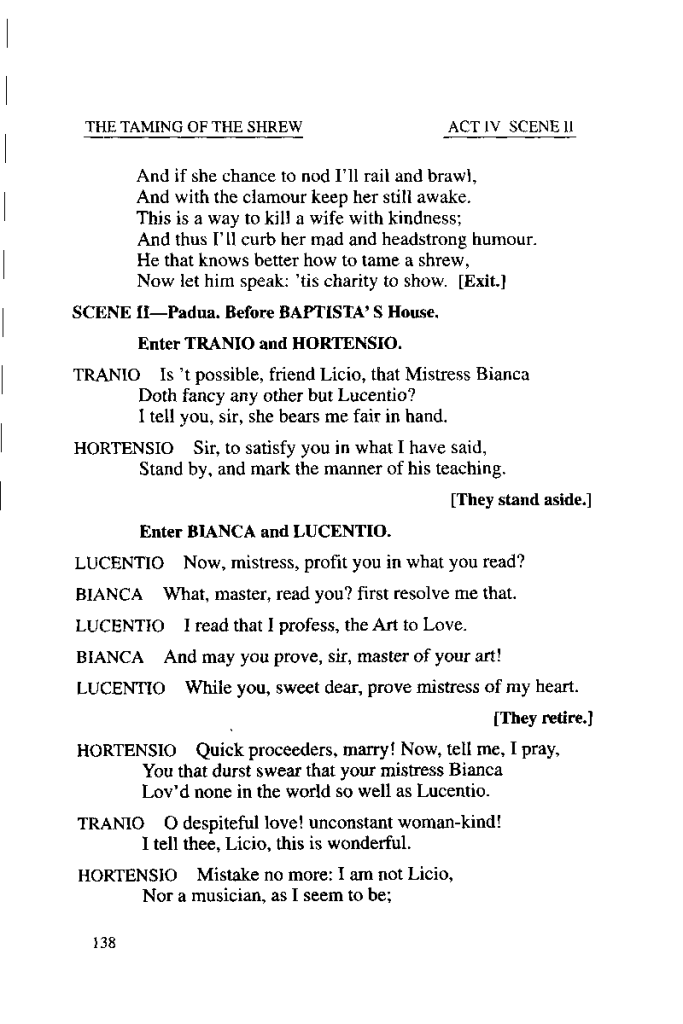




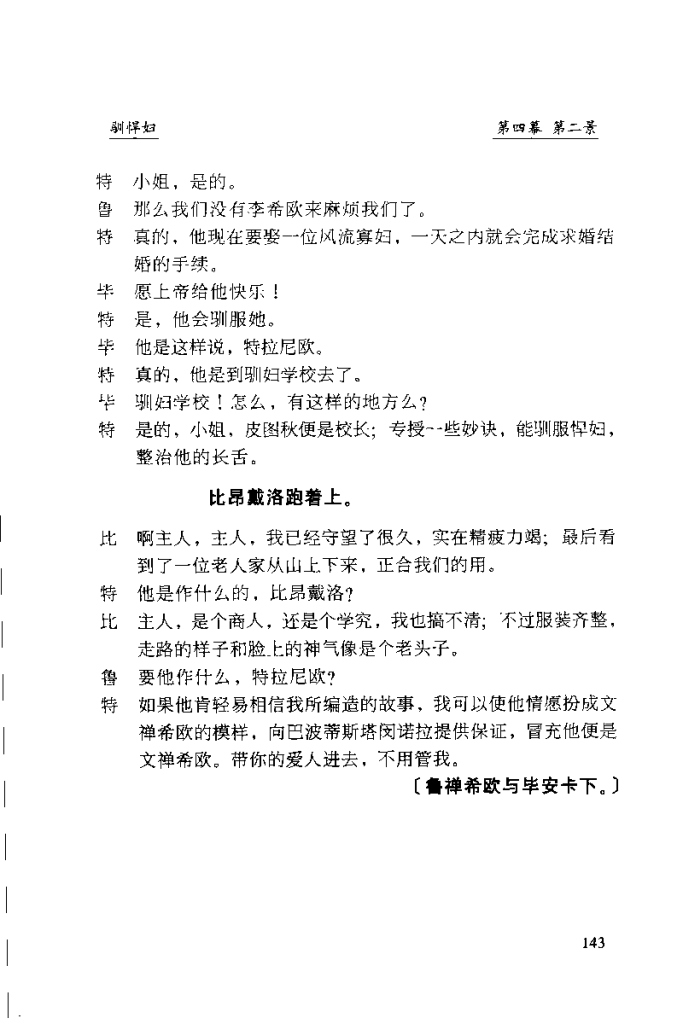

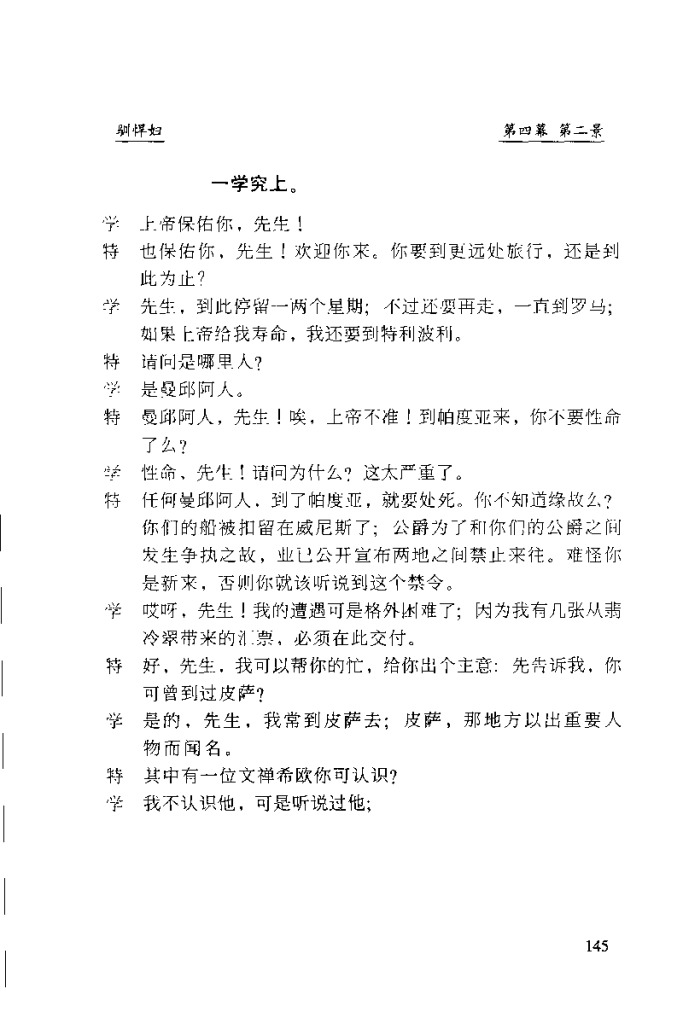


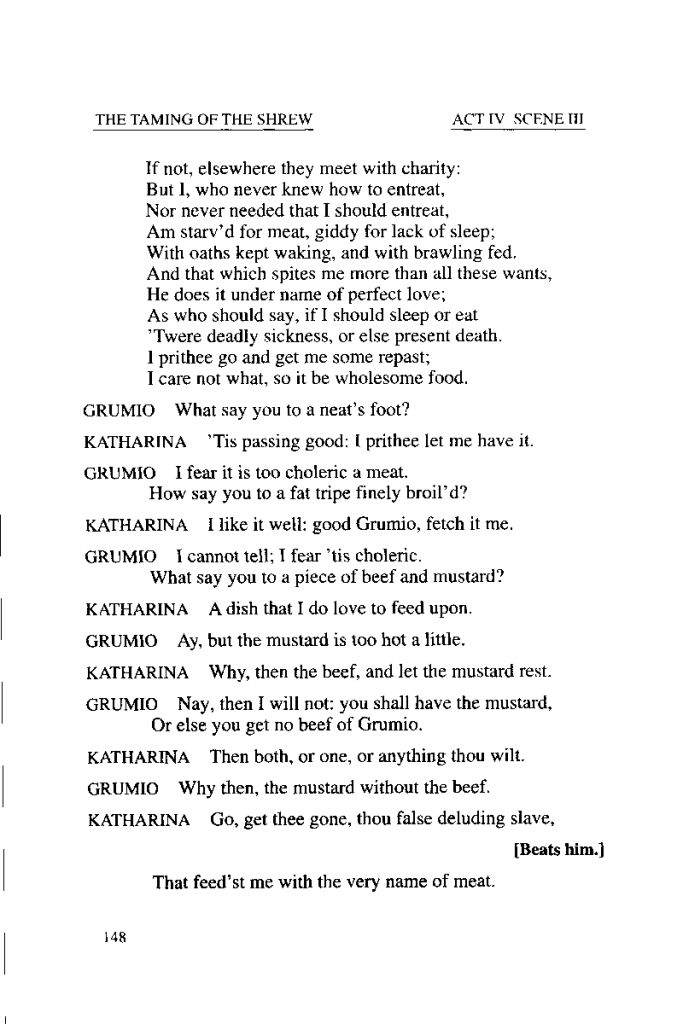











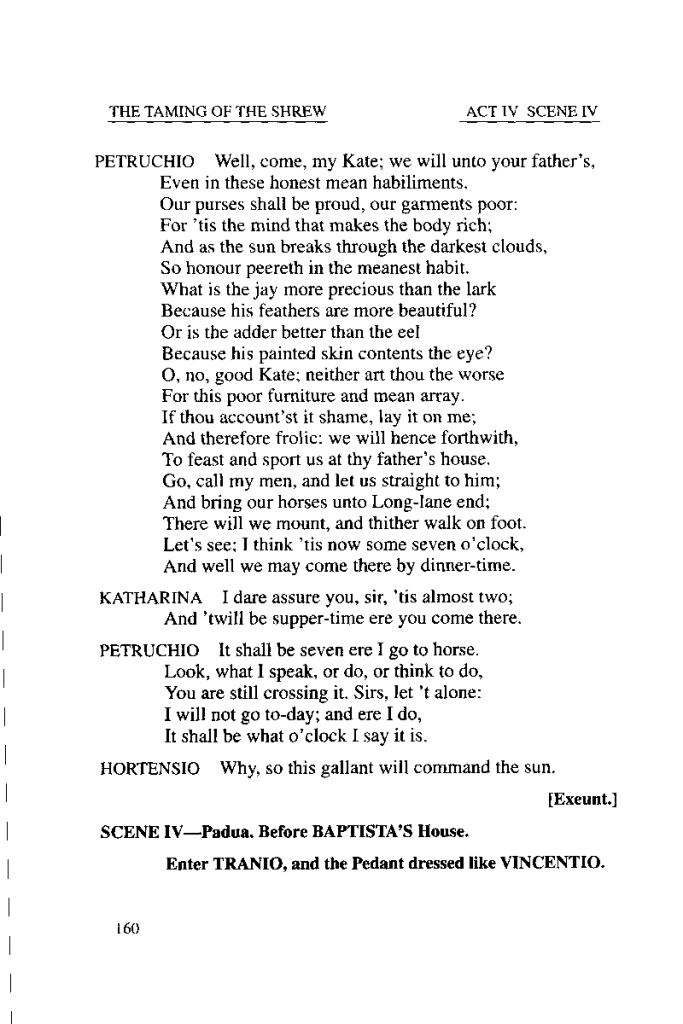







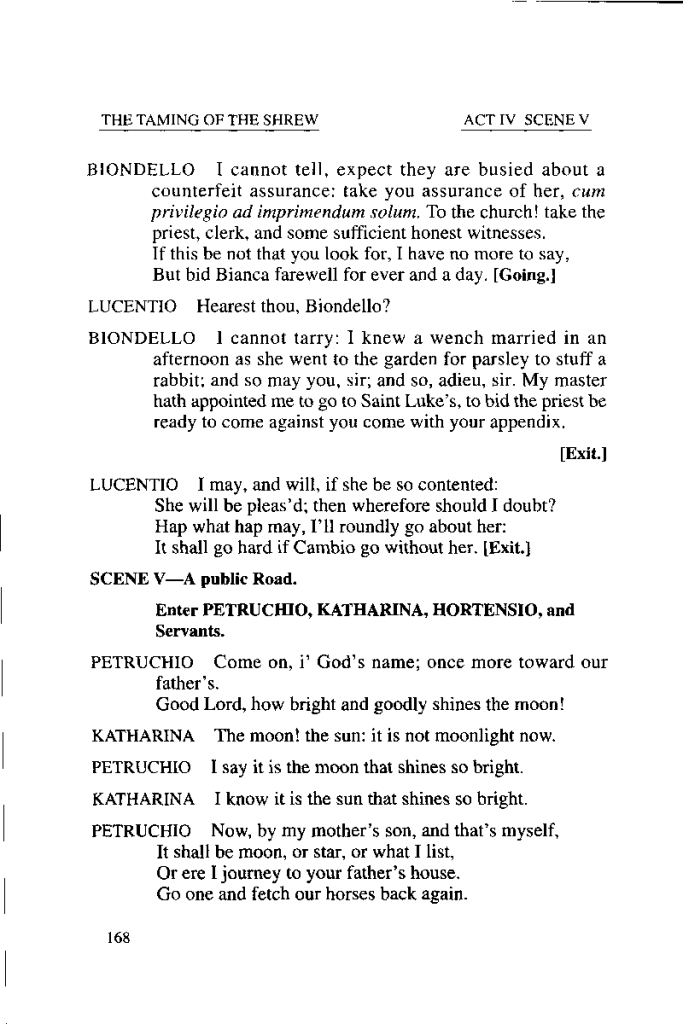



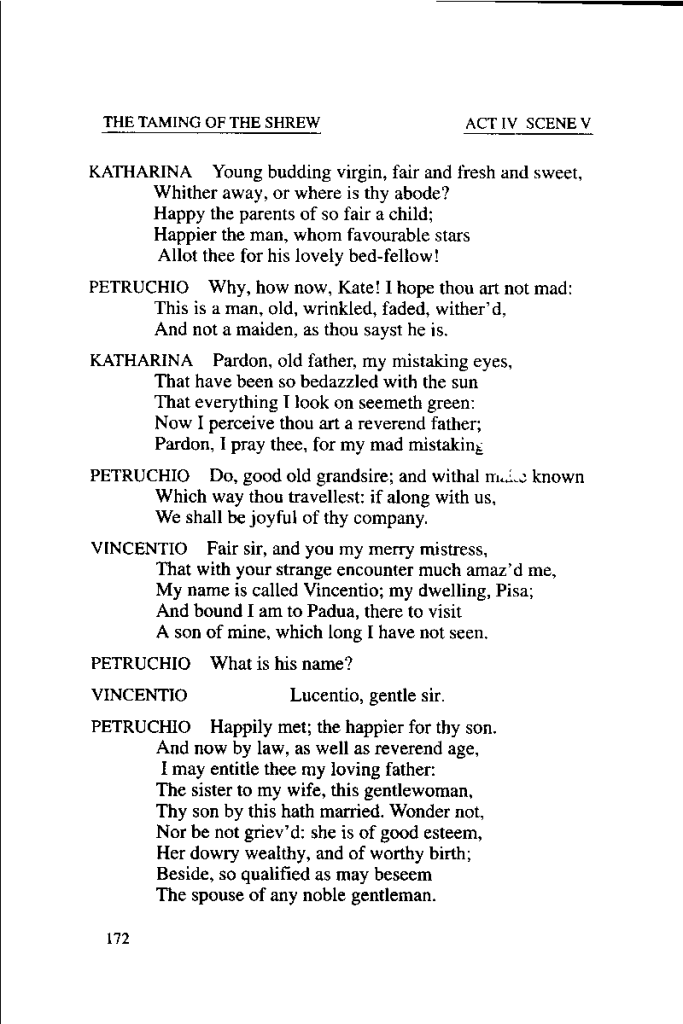

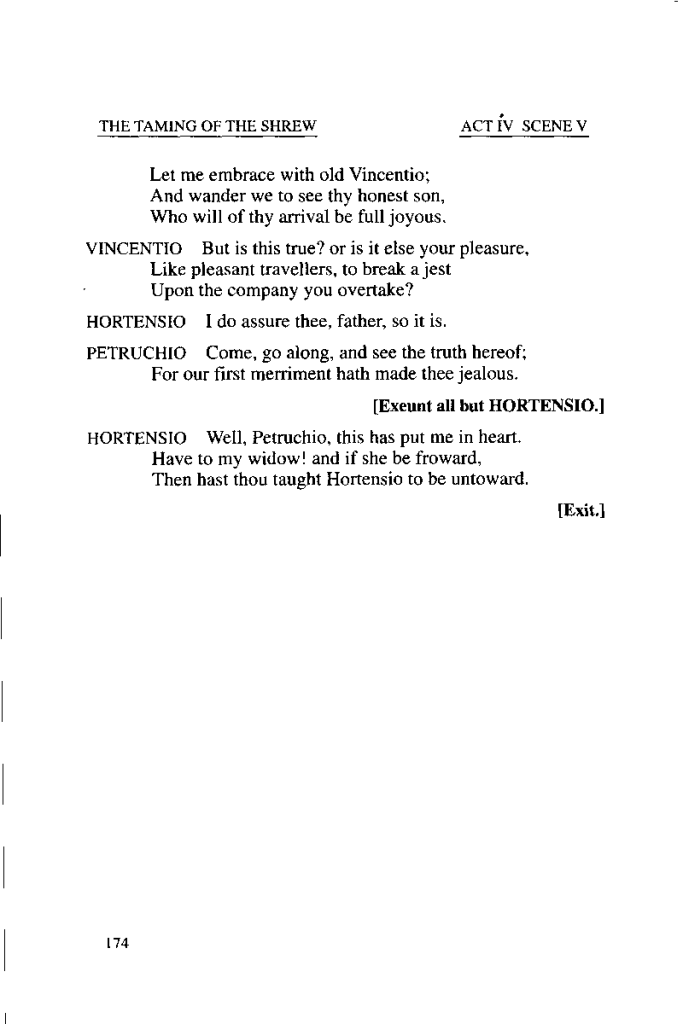





















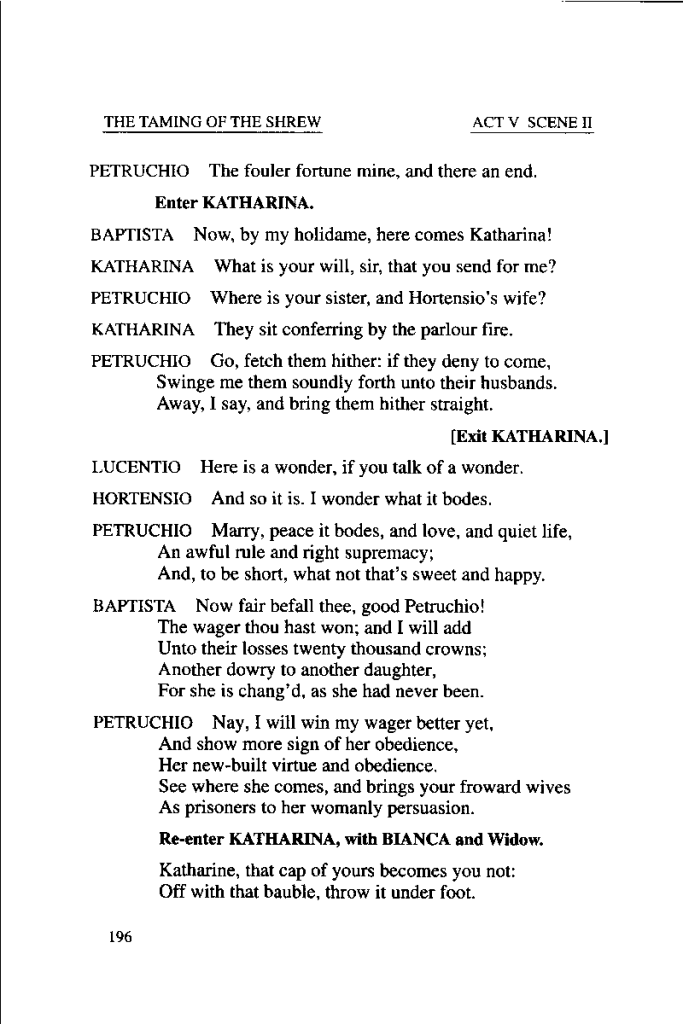
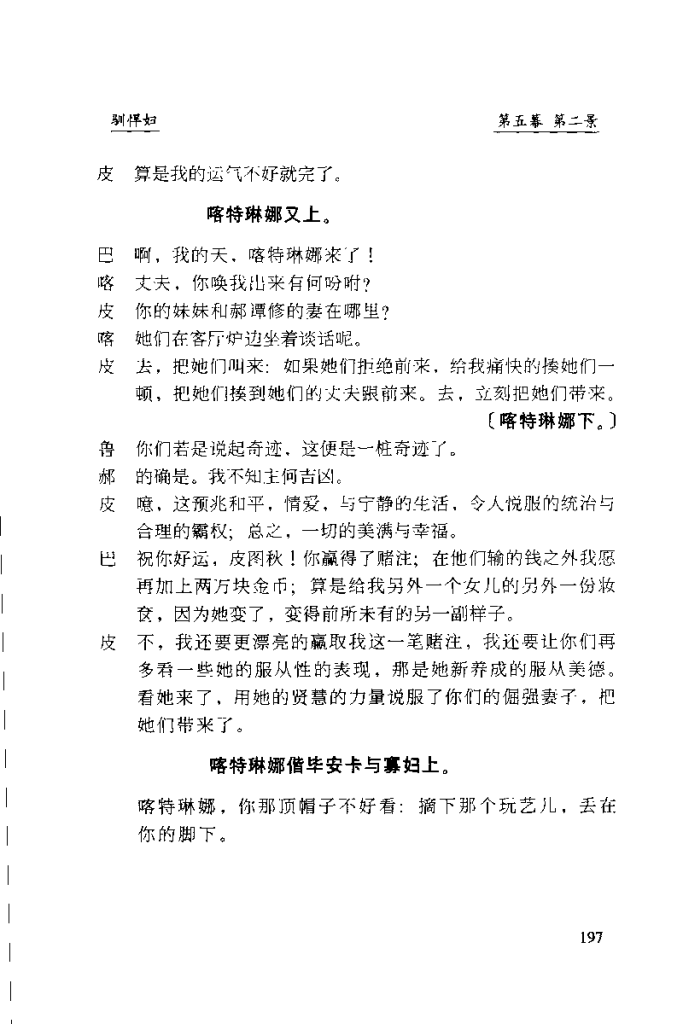







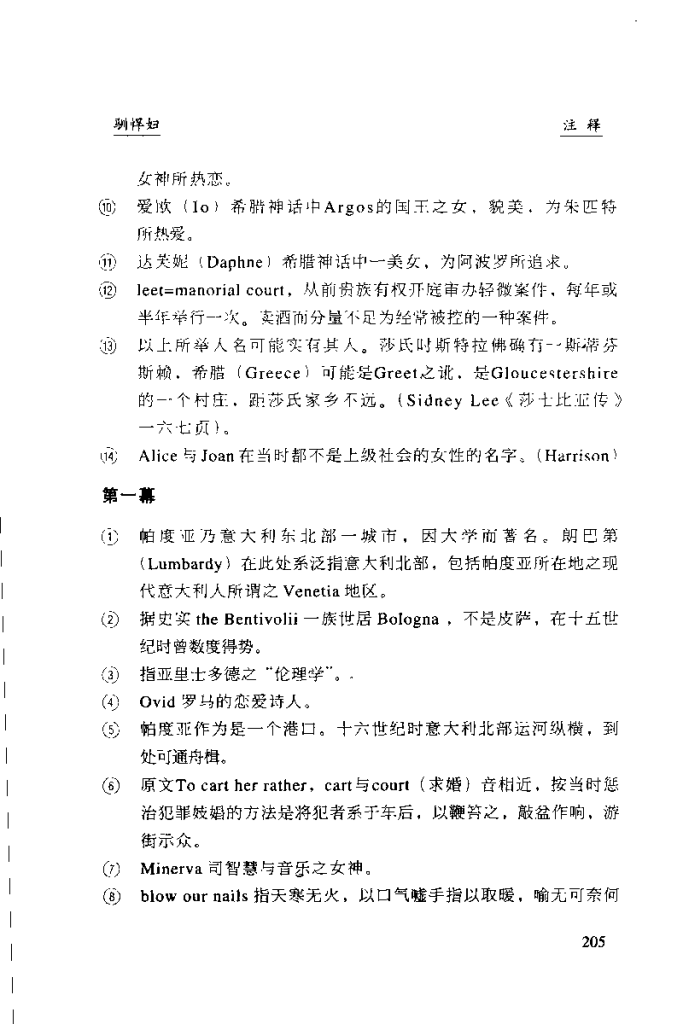


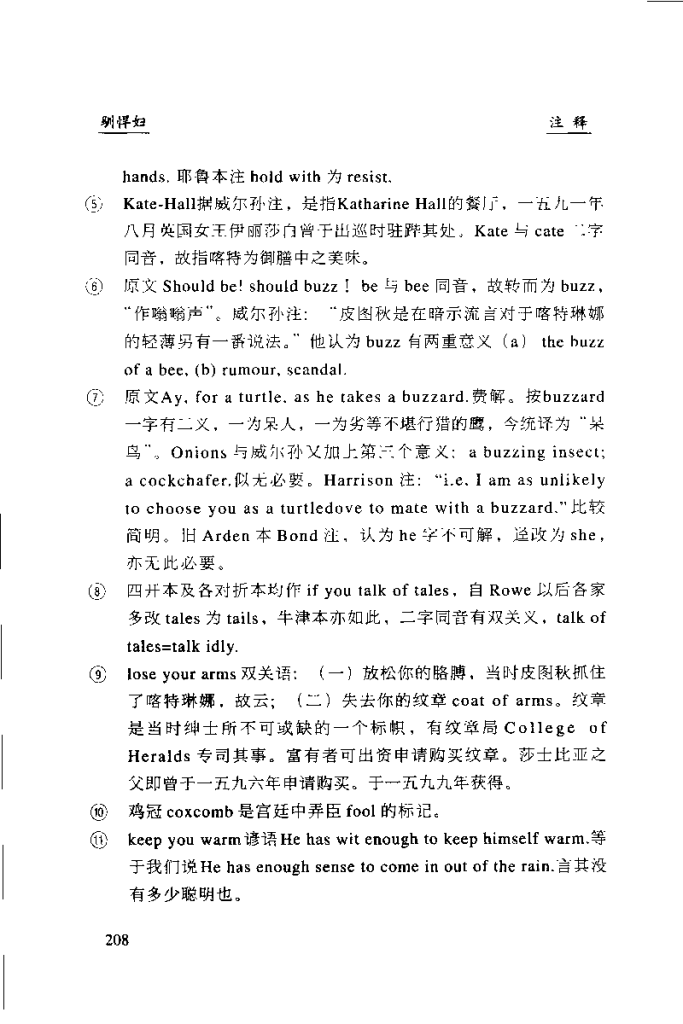



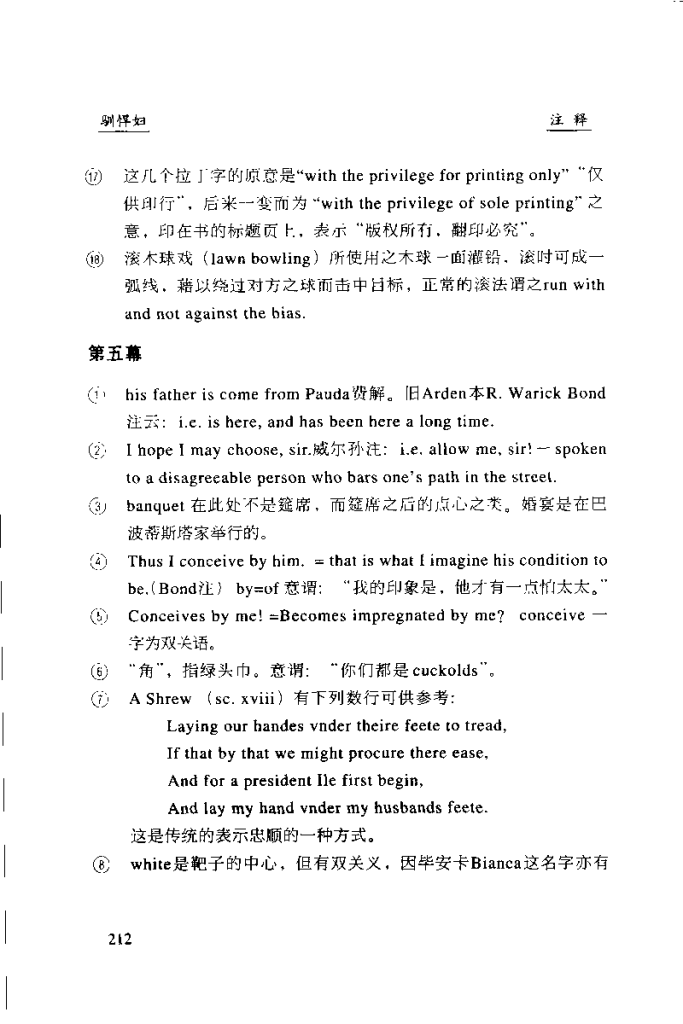



Culture文化 Masterpiece名著 215P 驯悍妇·莎士比亚全集11
历史上的今天 ( 49 ):
- 2024年-05月-16日:Video视频:胸部太大,照镜子不方便
- 2024年-05月-16日:Video视频:女生接吻很诱惑
- 2024年-05月-16日:Video视频:胸部太大很难受,有点抖
- 2024年-05月-16日:Video视频:黑人的按摩是这样的
- 2024年-05月-16日:Video视频:美臀舞蹈很好看
- 2024年-05月-16日:Video视频:洗澡为什么要穿衣服?
- 2024年-05月-16日:Video视频:纹身,手别乱碰
- 2024年-05月-16日:Video视频:这个妹子超性感
- 2024年-05月-16日:Video视频:两个辅警打起来了
- 2024年-05月-16日:Video视频:世风日下,这也玩?
- 2024年-05月-16日:Video视频:野外苟合的男女被掀被子
- 2024年-05月-16日:Video视频:经受得住诱惑的好男人
- 2024年-05月-16日:Video视频:被女朋友骗吻了
- 2024年-05月-16日:Video视频:这个老外坐地能吸土
- 2024年-05月-16日:Video视频:小帅哥被按摩女调戏
- 2024年-05月-16日:Video视频:胸前大西瓜请远离黄线
- 2024年-05月-16日:Video视频:性感女朋友在洗碗
- 2024年-05月-16日:Video视频:简单性感的服饰
- 2024年-05月-16日:Video视频:一字马女生很性感
- 2024年-05月-16日:Video视频:野外也可以完美的脱掉内裤
- 2024年-05月-16日:TV电视:Brat TV
- 2024年-05月-16日:News新闻:2024年5月16日新闻简报
- 2022年-05月-16日:Custom民俗:忤逆不孝报应图+二十四孝果报图 (39P)
- 2022年-05月-16日:Custom民俗:二十四孝之扑克版 (55P)
- 2022年-05月-16日:Custom民俗:二十四孝之剪纸版 (24P)
- 2022年-05月-16日:Custom民俗:古代女子二十四孝图(超清) (25P)
- 2022年-05月-16日:Custom民俗:清代广州通草画(人物) (22P)
- 2022年-05月-16日:China国内名家:十骏图&十骏犬图-郎世宁 (20P)
- 2022年-05月-16日:Knowledge知识:图解中国古建筑屋顶形式 (20P)
- 2022年-05月-16日:Sculpture雕塑:高公博先生木雕作品 (23P)
- 2022年-05月-16日:Sculpture雕塑:绝美通灵的儿童雕塑 (30P)
- 2022年-05月-16日:Custom民俗:国外的剪纸艺术 (41P)
- 2022年-05月-16日:Sculpture雕塑:希腊雕塑合集欣赏 (85P)
- 2022年-05月-16日:3D游戏:追跑兔子游戏
- 2022年-05月-16日:运动休闲:横屏足球游戏
- 2022年-05月-16日:运动休闲:沙滩足球游戏
- 2022年-05月-16日:运动休闲:犀牛溜冰场游戏
- 2022年-05月-16日:Treasure宝物:十宫词图 (20P)
- 2022年-05月-16日:3D游戏:雄出没游戏
- 2022年-05月-16日:3D游戏:3D拳王游戏
- 2022年-05月-16日:Global国外名家:德加作品全集赏析之一 (300P)
- 2022年-05月-16日:Global国外合集:19世纪英国名画赏析 (12P)
- 2022年-05月-16日:Region地理:内蒙古人文地图(旅游必备) (13P)
- 2022年-05月-16日:运动休闲:投篮游戏
- 2022年-05月-16日:3D游戏:飞行兔子游戏
- 2022年-05月-16日:运动休闲:跳高游戏
- 2022年-05月-16日:运动休闲:跳绳游戏
- 2022年-05月-16日:益智游戏:足球滚滚游戏
- 2022年-05月-16日:冒险闯关:逃亡神庙游戏
可点 ➠ 2023年-05月-16日 ➠ 85 s ➠ ♥ 0

